Aug. 31, 2024
Prelims Pointers
Aug. 31, 2024

About Payment Passkey Service:
- It uses device-based biometric authentication methods such as fingerprints or facial scans.
- It will provide customers with a non-OTP-based solution for transaction management.
- Working
- Passkeys work using algorithms to encrypt data so users can verify their identity fast and securely.
- When users first sign into an account, their device creates a pair of keys: one that is public and shared with the website to validate the passkey, and one that is private on your device to unlock the passkey to access your account.
- And it can work across devices from the same operating system: If you set up a passkey for an app or website on your phone, it can work if you log in from your laptop or tablet.
- Advantage: By replacing traditional passwords and OTPs, the Mastercard Payment Passkey Service makes transactions not only faster, but also more secure against fraud and scams.
- Passkeys can be used for payments. Payment passkeys offer a more secure and easier way for cardholders to authenticate themselves during e-commerce transactions on web or merchant apps.
Prelims Pointers
Aug. 31, 2024
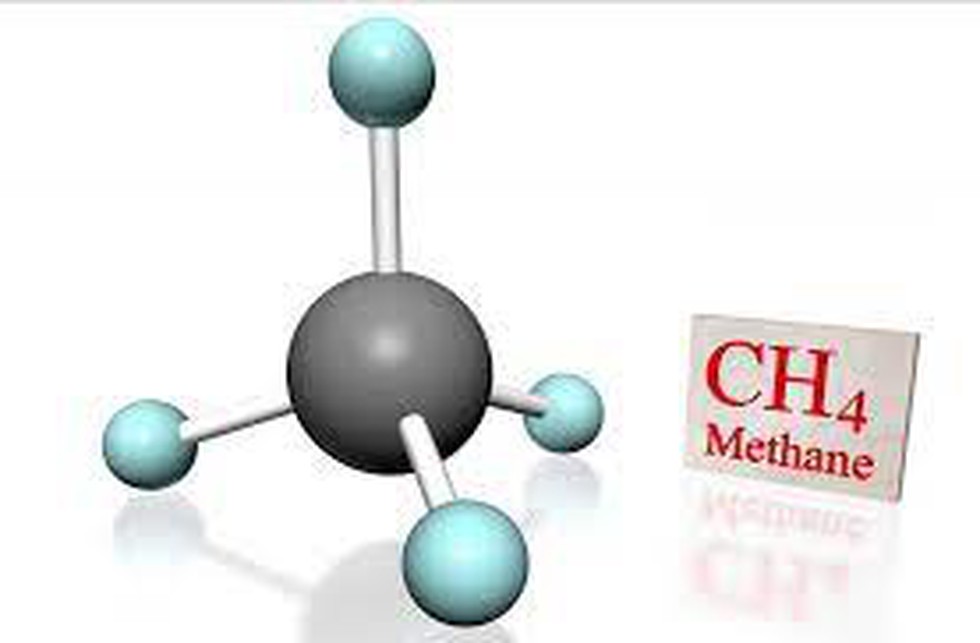
About Methane:
- It is the primary component of natural gas, and is responsible for approximately a third of the warming we are experiencing today.
- Characteristics
- It is a colorless odorless gas, flammable water insoluble gas.
- It is also known as marsh gas or methyl hydride.
- It is easily ignited. The vapors are lighter than air. Under prolonged exposure to fire or intense heat the containers may rupture violently and rocket.
- It is a powerful and short-lived greenhouse gas, with a lifetime of about a decade and Global Warming Potential about 80 times greater than that of carbon dioxide (CO2) during the 20 years after it is released into the atmosphere.
Where does methane come from?
- It sometimes comes from non-human sources like wetlands. These habitats contain things like permafrost, which is frozen ground that’s also filled with carbon from animals and plants that have been dead for hundreds of thousands of years.
- As temperatures rise with global warming, wetland permafrost thaws. That unleashes carbon, previously locked in the ice, in the form of CO2 and methane.
- Around 60% of the methane that makes it into the atmosphere comes from human activities.
Prelims Pointers
Aug. 31, 2024
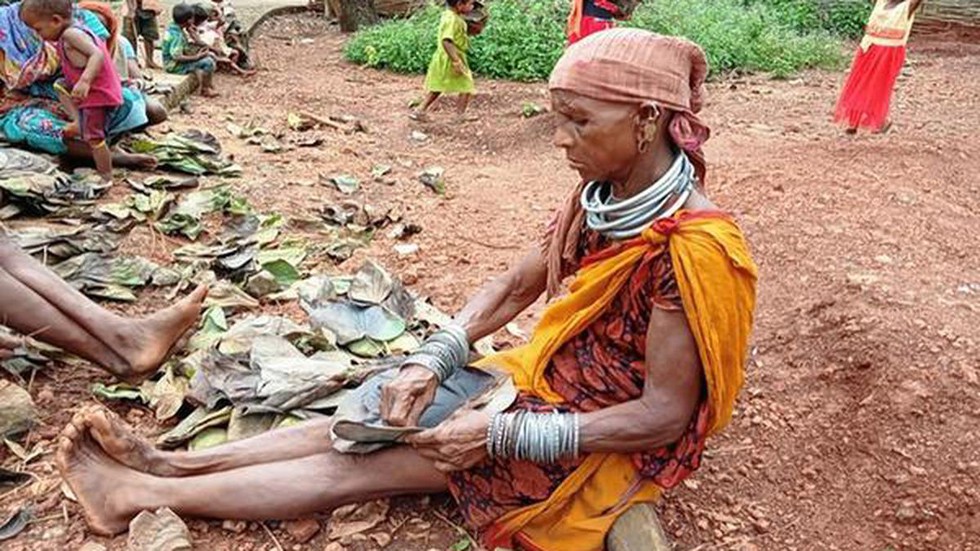
About Bonda Tribe:
- The Bondas are exclusively found in Malkangiri district of Odisha and are mostly concentrated in Khairaput block of the district.
- It is a particularly vulnerable tribal group and one of the oldest tribes of India.
- They are also known as Bondo, Bondas, Bonda Paraja, and Bhonda.
- They belong to the Austro-Asiatic racial stock and speak Remo-an Austro-Asiatic dialect.
- The Bondas are divided into two groups because of their distinct cultural practices:
- The Lower Bondas, who live in the Malkangiri district in south Odisha and border Andhra Pradesh and Chhattisgarh, and
- The Upper Bondas, who live in the remote villages of the district’s hilly terrain.
- They have an interesting dressing style – ladies are semi clad and wear different sorts of rings and pieces of jewelry around their bodies.
- Occupation: They are primarily farmers, but they also hunt, gather forest products, and perform labor.
Prelims Pointers
Aug. 31, 2024

About Whale shark:
- It is the largest fish in the worldand the largest fish known to have lived on this planet.
- They are one of only three species of filter feeding sharks.
- Distribution: They can be found in all temperate and tropical oceansaround the world, except the Mediterranean Sea.
- Appearance
- They are dark gray on top and light underneath, with a series of light spots or stripes covering the dark parts of their bodies. This helps to camouflage them as they swim.
- Unlike most shark species, its mouth is located at the front of the head(terminal) instead of the underside of the rostrum (subterminal).
- They are filter feeders and can neither bite nor chew. They can process more than 6,000 litres of water an hour through their gills.
- Inside the mouth are specialized flaps called velums. These stop the backflow of water as the whale shark closes its mouth, preventing the loss of food.
- Food Habit: They feed on planktonand travel large distances to find enough food to sustain their huge size, and to reproduce.
- They also eat small and large fish and mollusks, including sardines, anchovies, mackerels, squid, and even small tuna and albacore.
- Conservation Status:
- IUCN: Endangered
- Wildlife Protection Act 1972: Schedule I
- Threats: The whale sharks continue to face challenges primarily due to bycatch and accidental capture in fishing nets, illegal hunting and habitat degradation.
- A global study indicates that over the past 75 years, the world’s whale shark population has decreased by 50%.
Prelims Pointers
Aug. 31, 2024
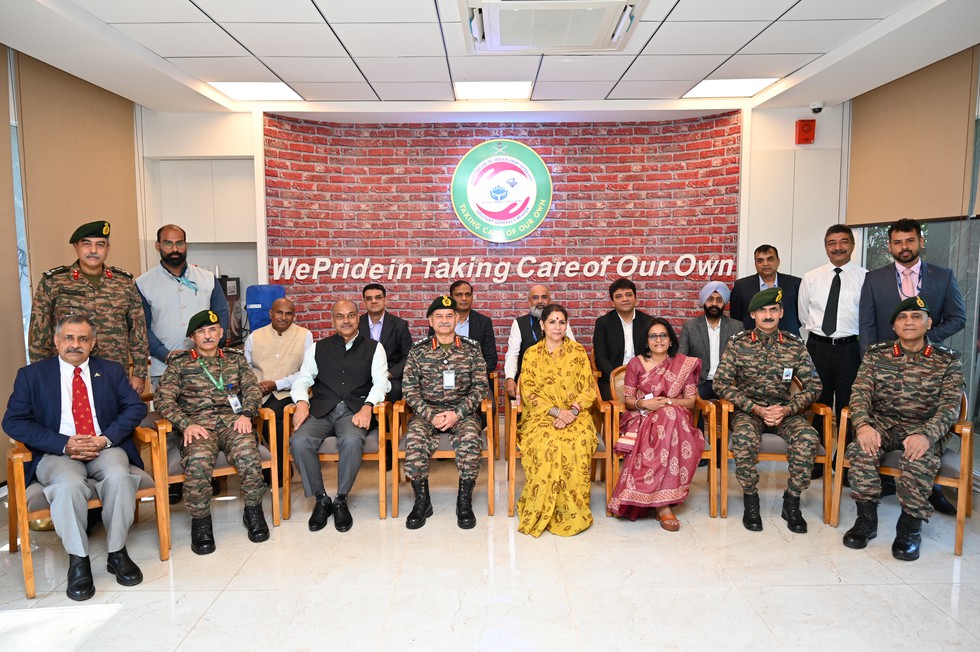
About Project NAMAN:
- It is designed to provide dedicated support and services to Defence Pensioners, Veterans and their families.
- It is centered around the implementation of the SPARSH (System for Pension Administration Raksha), digital pension system, which streamlines pension related processes for Defence Pensioners, addressing the critical need for accessible facilitation points for Veterans and Next of Kin (NOK) across the country.
- It involves the establishment of reception and facilitation centres, enabled through a tripartite Memorandum of Understanding (MoU) between the Indian Army’s Directorate of Indian Army Veterans Common Service Centre (CSC) e-Governance India Limited, and HDFC Bank Limited signed last year in September 2023.
- These Common Service Centres are dedicated to Army Veterans, Pensioners, War Widows, and NOKs, offering SPARSH-enabled pension services, Government to Citizen (G2C) services, and Business to Consumer (B2C) services, all at a single, convenient location.
- In the first phase of Project NAMAN, 14 CSCs have been established at key locations across India, including New Delhi, Jalandhar, Leh, Dehradun, Lucknow, Jodhpur, Bengdubi, Gorakhpur, Jhansi, Secunderabad, Saugor, Guntur, Ahmedabad and Bangalore.
- This initiative not only delivers essential care and support to esteemed veterans but also extends services to the entire resident population of military stations and surrounding localities.
- Each CSC is managed by a Village Level Entrepreneur (VLE), selected from among the veterans or NOKs by the respective Local Military Authorities (LMAs).
- These VLEs are onboarded by CSC e-Governance India Limited and receive comprehensive training to deliver the required services.
- Financial assistance: HDFC Bank also supports the VLEs with a monthly monetary grant of ₹ 20,000 for the first 12 months, assisting in the stabilisation and sustainability of the centres.
Prelims Pointers
Aug. 31, 2024
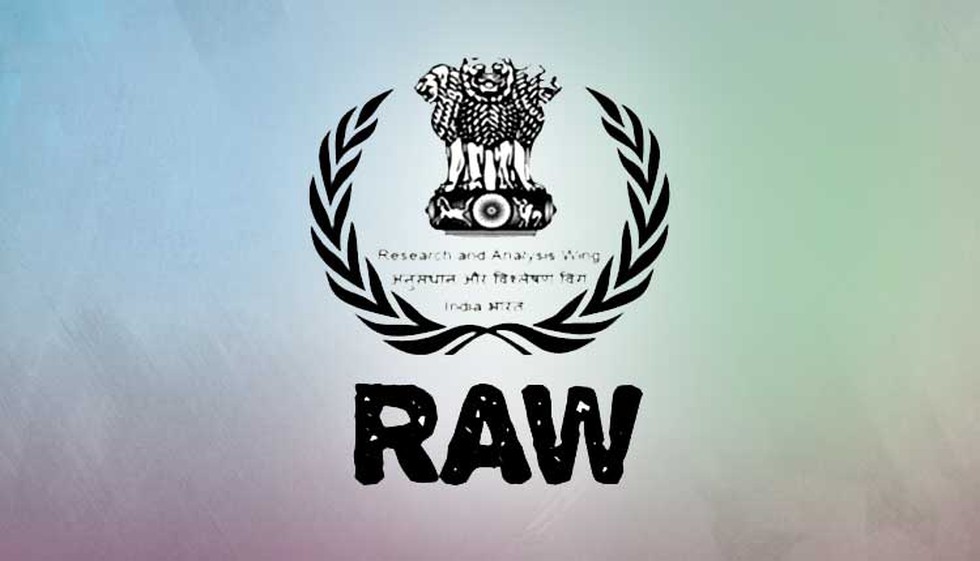
About Research and Analysis Wing (R&AW):
- It was established in 1968 to handle India’s international intelligence affairs.
- At present, R&AW is under the aegis of the Prime Minister’s Office.
- Working mechanism: It collects military, economic, scientific, and political intelligence through covert and overt operations.
- The agency is also charged with monitoring terrorist elements and smuggling rings that transport weapons and ammunition into India.
- Formation:
- Until 1968, the Intelligence Bureau (IB) was responsible for India’s internal intelligence and also handled external intelligence.
- However, after the 1962 China-India war and the Indo-Pakistani war in 1965, India established a separate and distinct external intelligence organization–the R&AW.
- Since its inception, RAW is credited with providing intelligence support to many significant operations on foreign soil.
Prelims Pointers
Aug. 31, 2024
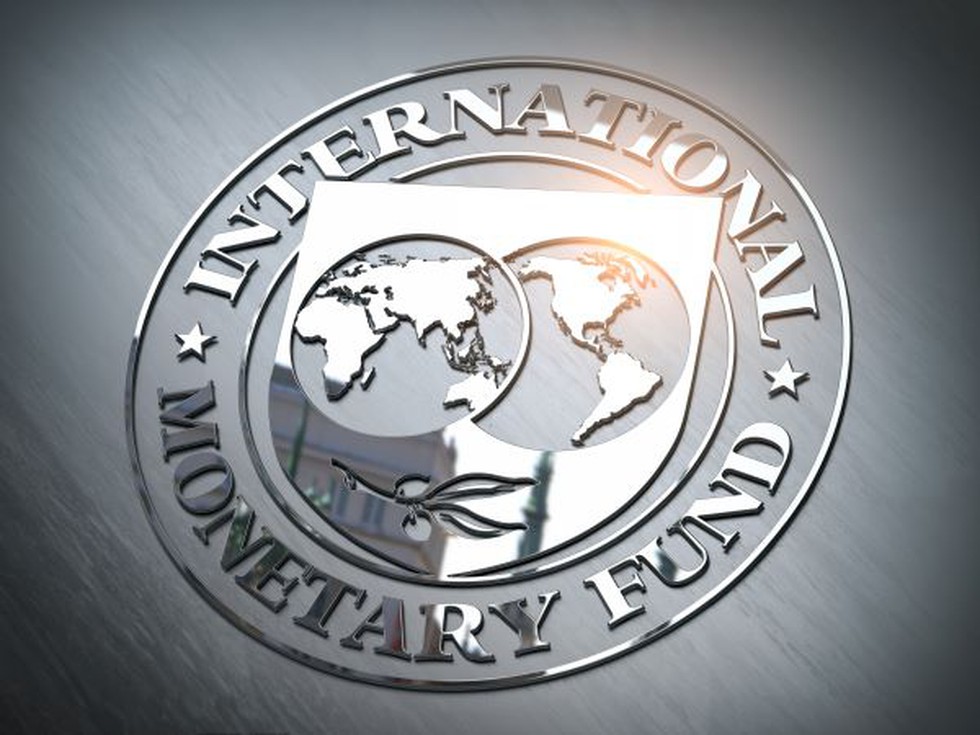
About International Monetary Fund (IMF):
- It is a United Nations (UN) specialized agency, founded at the Bretton Woods Conference in 1944.
- It was established in the aftermath of the Great Depression of the 1930s.
- The main objectives of the IMF include supporting global monetary cooperation, securing financial stability, facilitating international trade, promoting high employment and sustainable economic growth, and reducing poverty.
- Through its economic surveillance, the IMF keeps track of the economic health of its member countries, alerting them to risks on the horizon and providing policy advice.
- It also lends to countries with balance-of-payments difficulties, and provides technical assistance and training to help countries improve economic management.
- IMF funds are often conditional on recipients making reforms to increase their growth potential and financial stability.
- It is currently composed of 190 member countries.
- The IMF is headquartered in Washington, DC.
- Structure:
- At the top of its organizational structure is the Board of Governors, consisting of one governor (usually the minister of finance or the governor of the central bank) and one alternate governor from each member country.
- All powers of the IMF are vested in the Board of Governors.
- The day-to-day work of the IMF is overseen by its 24-member Executive Board, which represents the entire membership and is supported by IMF staff.
- The Managing Director is the head of the IMF staff and Chair of the Executive Board and is assisted by four Deputy Managing Directors. The managing director is usually a European.
- The IMF has 18 departments that carry out its country, policy, analytical, and technical work.
- Each member contributes a sum of money called a quota subscription.
-
- Quotas are reviewed every five years and are based on each country’s wealth and economic performance—the richer the country, the larger its quota, making the S., with the world's largest economy, the largest contributor.
- The quotas form a pool of loanable funds and determine how much money each member can borrow and how much voting power it will have.
- Voting Powers:
- Quotas of member countries are a key determinant of the voting power in IMF decisions.
- Votes comprise one vote per 100,000 special drawing rights (SDR) of quota plus basic votes.
- SDRs are an international type of monetary reserve currency created by the IMF as a supplement to the existing money reserves of member countries.
Prelims Pointers
Aug. 31, 2024
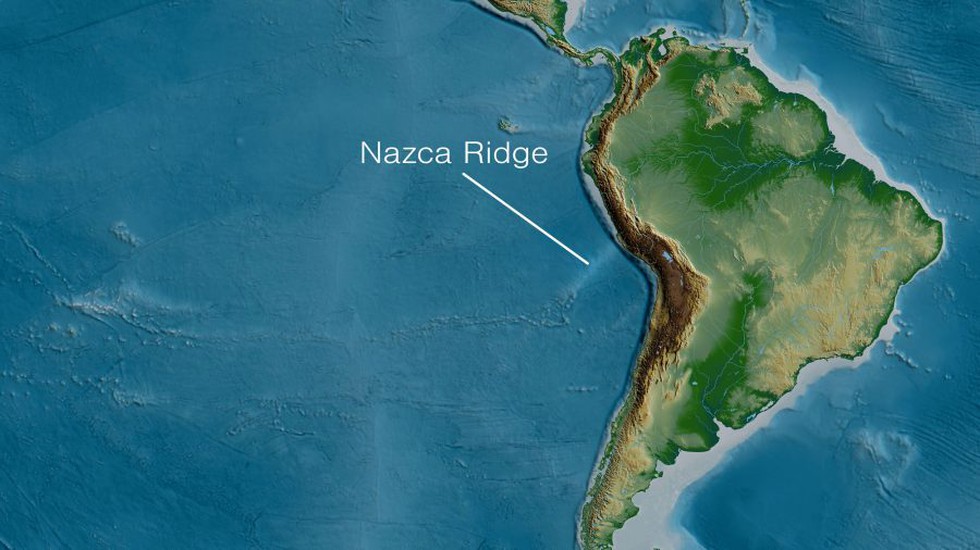
About Nazca Ridge:
- It is a submarine ridge located in the southeastern Pacific Ocean off the coast of South America.
- It is approximately 1,100 kilometers (684 miles) long and varies in width.
- The ridge extends from the Nazca Plate, off the coast of Peru, and runs southwest toward Easter Island, Chile.
- It was formed by volcanic activity associated with a hotspot in the Earth's mantle.
- The ridge is composed of abnormally thick basaltic ocean crust.
- The ridge is tectonically active and is being subducted beneath the South American Plate at the Peru-Chile Trench.
What is a Seamount?
- A seamount is an underwater mountain with steep sides rising from the seafloor.
- Most seamounts are remnants of extinct volcanoes.
- Typically, they are cone-shaped but often have other prominent features such as craters and linear ridges, and some, called guyots, have large flat summits.
- There is a broad size distribution for seamounts, but to be classified as a seamount, the feature must have a vertical relief of at least 1,000 meters (3,300 feet) above the surrounding seafloor.
- They are found in every world ocean basin.
- These are formed near mid-ocean ridges, where the earth’s tectonic plates are moving apart, allowing molten rock to rise to the seafloor.
- Some seamounts have also been found near intraplate hotspots– regions of heavy volcanic activity within a plate – and oceanic island chains with a volcanic and seismic activity called island arcs.
Prelims Pointers
Aug. 31, 2024
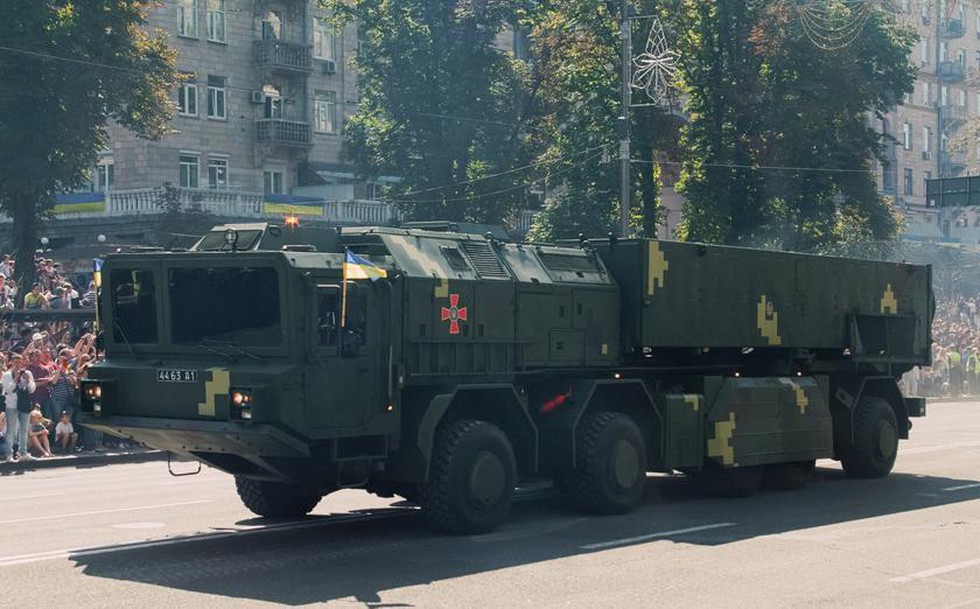
About Hrim-2:
- Hrіm-2, Grim, Grom, or OTRK Sapsan, also known as Operational-Tactical Missile System Hrim is a Ukrainian short-range ballistic missile system.
- It is designed to combine the features of a tactical missile system and a multiple rocket launcher.
- The Hrim-2 version, developed for export, has a range limited to 280 kilometers in order to fall within the 300- kilometre limit set by the Missile Technology Control Regime.
- However, for Ukrainian military needs, the system's range has been extended to 700 km.
- The Sapsan system comprises a 10-wheeled Transporter-Erector-Launcher (TEL) capable of carrying two containerized missiles simultaneously.
- Its aero-ballistic capabilities allow evasion of modern air defenses like the S-300 and S-400, drawing parallels to the Russian 9K720 Iskander missile complex.
What is a Ballistic Missile?
- It is a rocket-propelled, self-guided strategic-weapon system that follows a ballistic trajectory to deliver a payload from its launch site to a predetermined target.
- They are powered initially by a rocket or series of rockets in stages, but then follow an unpowered trajectory that arches upwards before descending to reach its intended target.
- They can carry conventional high explosives as well as chemical, biological, or nuclear munitions.
- They can be launched from aircraft, ships, and submarines, in addition to land-based silos and mobile platforms.
- There are four general classifications of ballistic missiles based on their range, or the maximum distance the missile can travel:
- Short-range: less than 1,000 kilometers (approximately 620 miles), also known as “tactical” ballistic missiles.
- Medium-range: between 1,000 and 3,000 kilometers (approximately 620-1,860 miles), also known as “theater” ballistic missiles.
- Intermediate-range: between 3,000 and 5,500 kilometers (approximately 1,860-3,410 miles)
- Long-range: more than 5,500 kilometers (approximately 3,410 miles), also known as intercontinental or strategic ballistic missiles.
- Short- and medium-range ballistic missiles are referred to as theater ballistic missiles, whereas ICBMs, or long-range ballistic missiles, are described as strategic ballistic missiles.
Prelims Pointers
Aug. 31, 2024
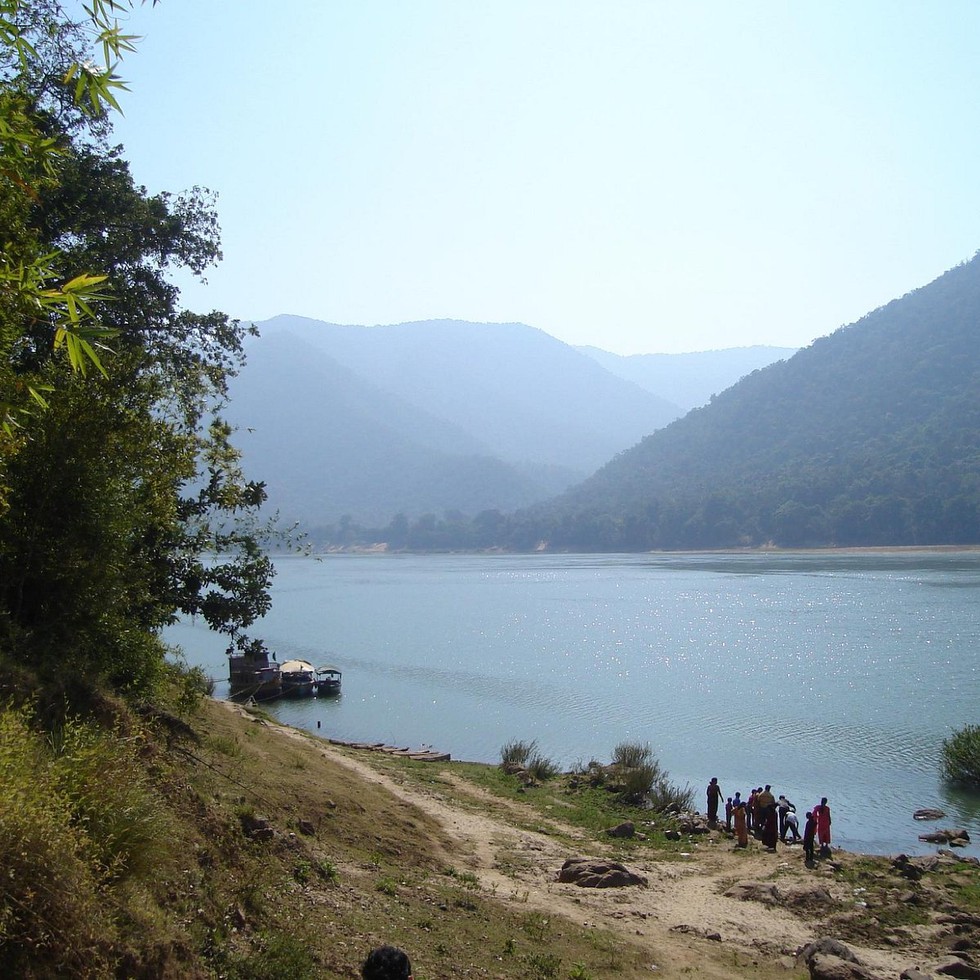
About Satkosia Tiger Reserve:
- Location: It is located in Odisha and spreads over four districts, viz. Angul, Cuttack, Boudh, and Nayagarh.
- It comprises two adjoining sanctuaries, namely Baisipalli Sanctuary and Satkosia Gorge Sanctuary.
- The reserve has an area of 1136.70 sq.km. with 523.61 sq.km. as a core area. The area is also a part of the Mahanadi Elephant Reserve.
- Satkosia is the meeting point of two biogeographic regions of India; the Deccan Peninsula and the Eastern Ghats.
- Landscape: The terrain is hilly, with moderate to steep slopes and narrow valleys.
- The river Mahanadi flows through the valleys in the middle of the reserve.
- The average elevation of the terrain varies between 37 m and 932 m, with the lowest point being at Katrang and the highest point being at Sunakhania.
- Vegetation: The forest vegetation comprises of North Indian tropical moist deciduous forests and Moist peninsular low-level sal.
- Flora:
- The main tree species being sal, which grows in gregarious formations.
- Other associate species are Asan (Terminalia alata), Dhaura (Anogeissus latifolia), Bamboo (Dendrocalamus strictus), and Simal (Bombax ceiba).
- Fauna:
- The reserve has a low population of tiger, leopard, elephant, spotted deer, sambar, chowsingha, barking deer, bison, wild dog, sloth bear, jackal, giant squirrel, and porcupine.
- It is the natural habitat of two endangered species, viz., the freshwater crocodile and the gharial.
Aug. 30, 2024
Prelims Pointers
Aug. 30, 2024

About D-Voter:
- The concept of D-Voter is unique to Assam, where migration and citizenship are among the biggest political fault lines.
- It was introduced in Assam in 1997 by the Election Commission, targeting those who could not prove their Indian nationality.
- Those persons whose citizenship was doubtful or was under dispute were categorized as ‘D- Voters’ during the preparation of the National Register of Citizens in Assam.
- ‘Doubtful voter’ or ‘doubtful citizenship’ have not been defined in the Citizenship Act, 1955, or the Citizenship Rules of 2003.
- The Citizenship Rules, 2003, was framed under the provisions of the Citizenship (Amendment) Act, 2003.
- The rules framed in 2003 list out the steps to be followed for the preparation of the National Population Register (NPR) and the National Register of Indian Citizens (NRIC).
- Under subsection 4 of section 4 that deals with the preparation of NRIC, it has been only mentioned that details of individuals whose citizenship is doubtful will be entered by the Local Registrar with ‘appropriate remark in the population register for further enquiry’.
- A family or individual is notified in a specific pro forma as soon as the verification process concludes whether they have been classified as a dubious citizen (D-Category).
- Before deciding whether or not to add their name to the register, they are alsogiven the opportunity to be heard by the Taluk, or Sub-district Registrar of Citizenship. The Registrar has ninety days to complete and justify his findings.
- Because their Indian citizenship has not been verified, doubtful voters are not allowed to vote in elections.
- They are also not permitted to run for office in the nation's elections.
- The marking as doubtful voter is a temporary measure and cannot be prolonged. A decision in a definite period of time must be taken.
- According to the documentation provided, if it is determined that the individual is a foreign national or an illegal immigrant, they may be deported or placed in a detention centre.
- D- Voters also have the option to apply and get their names included in NRC.
- They will be included only after they get clearance from the Foreigners Tribunals and their names are removed from electoral rolls under the ‘D’ category.
Prelims Pointers
Aug. 30, 2024

About SHe-Box Portal:
- It is a centralized platform for registering and monitoring complaints of sexual harassment of women in the workplace.
- It serves as a centralized repository of information related to Internal Committees (ICs) and Local Committees (LCs) formed across the country, encompassing both the government and private sectors.
- It offers a common platform to file complaints, track their status, and ensure time-bound processing of complaints by ICs.
- It provides assured redressal of complaints and a streamlined process for all stakeholders.
- The portal will also enable real-time monitoring of complaints through a designated nodal officer.
- The portal will ensure that complaints can be safely registered without personal information being publicly accessible.
- The SHe-Box portal can be accessed at https://shebox.wcd.gov.in/.
- Points to Remember:
- In 2017, an upgraded version of SHe-Box was launched based on The Sexual Harassment of Women at Workplace (Prevention, Prohibition, and Redressal) Act, 2013, where women who are harassed at any workplace can register their case on this, SHe-Box, file their complaint, and then two types of committees will be formed.
- One, for private institutions, an internal committee will be formed, and for government institutions, a local committee will be formed under the chairmanship of the DM or DC or an officer appointed by them, and actions will be taken by them from time to time.
Prelims Pointers
Aug. 30, 2024

About Bonus Issue:
- A bonus issue, also known as a scrip issue or a capitalization issue, occurs when a company listed on a stock exchange decides to offer free additional shares to the existing shareholders.
- The company decides the number of bonus shares to be allotted to every individual investor for holding a certain number of shares over a set period of time and accordingly rewards them.
- For example, a company may give one bonus share for every five shares held.
- This bonus issue aims to attract further investment and reward its existing shareholders as it improves the entity's market image.
- A bonus issue of shares will increase a company's share capital but not its market capitalisation.
- Market capitalisation is calculated by multiplying the company's current stock price and the total number of outstanding shares. Share capital is the amount that the company raises by issuing shares.
- By issuing bonus shares, the number of outstanding shares increases with a proportional decrease in the value of each share, ensuring no change in the market capitalization. However, the face value of the shares remains unchanged.
- They do not dilute shareholders’ equity because they are issued in a constant ratio that keeps the relative equity of each shareholder the same as before the issue.
- A bonus share issue is funded by the company's healthy profits reflected in its annual or quarterly results or from its share reserves.
- The issuance of bonus shares is not taxable; however, shareholders must still pay capital gains taxif they sell them for a net gain.
What is a Stock Split?
- A stock split is an action taken in which a company divides its existing shares into multiple shares to boost the liquidity of shares.
- A split is usually undertaken when the stock price is high, making it pricey for investors to acquire.
- It brings down the share price as the number of shares increases.
- The market cap of the firm and the value of each shareholder’s investment stay unchanged after a stock split.
Stock Split v/s Bonus Issue:
- Most people mistake stock splits for bonus concerns. This is due to the fact that, similar to stock splits, bonus issues can result in a rise in the company's share count.
- In contrast to a stock split, where the face value of each share is decreased, a bonus issue offers existing owners more shares at no cost in proportion to the shares they now possess in the company.
- Therefore, bonus shares raise the company's share capital while a stock split keeps it constant.
- However, in both scenarios, the number of shares rises and the share price falls accordingly.
Prelims Pointers
Aug. 30, 2024

About Solar Paraboloid Technology:
- It is an advanced form of concentrating solar power (CSP) technology.
- It not only enhances the efficiency of solar energy capture but also addresses the limitations that have long plagued traditional photovoltaic (PV) systems.
- Working?
- Solar paraboloids operate using a Parabolic Trough Collector (PTC) system.
- These systems consist of long, parabolic mirrors that focus sunlight onto a receiver tube placed at the focal line of the mirror.
- The concentrated solar energy heats a fluid within the receiver, which can then be used to generate electricity or provide direct heat for industrial processes.
- Benefits:
- Solar paraboloids are highly efficient in concentrating solar energy, which means that more electricity can be generated from the same amount of sunlight.
- This efficiency could lead to lower costs per unit of electricity produced, making solar energy more competitive with traditional fossil fuels.
- Another key benefit is its ability to operate at higher temperatures, up to 300°C, which significantly increases thermal efficiency. This is achieved by reducing heat losses through a smaller absorbing surface area.
- The technology can produce energy even in low-light conditions, making it a versatile solution for diverse environments.
- Solar paraboloid systems are scalable and can be deployed in various configurations, from small-scale applications to large solar farms.
Prelims Pointers
Aug. 30, 2024
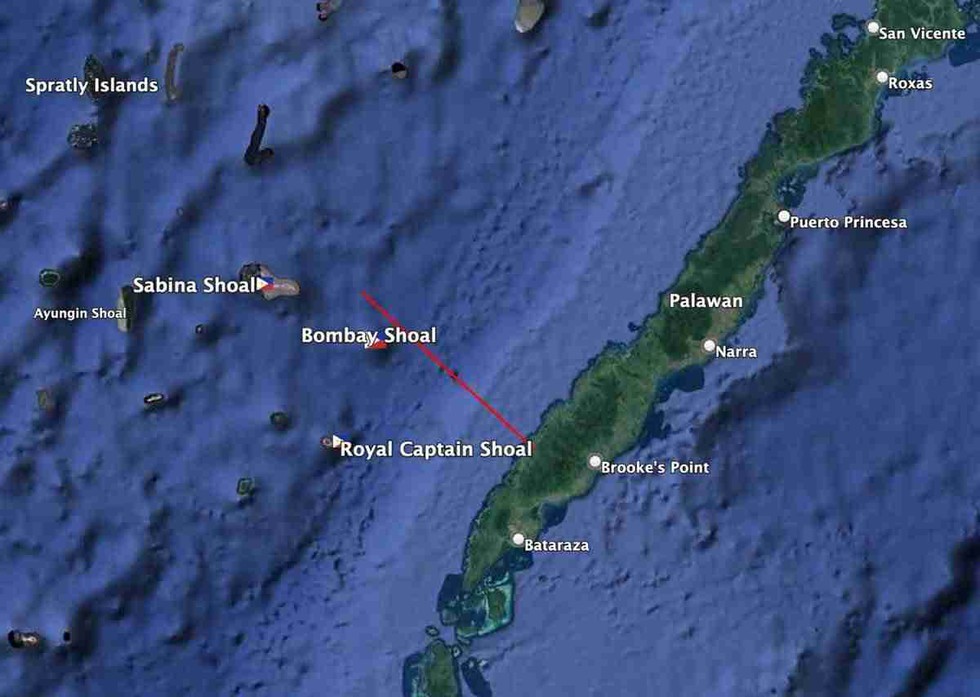
About Sabina Shoal:
- It is also known as Xianbin Reef. It is an oceanic coral atoll that developed on top of a seamount in the eastern part of the Spratlys Islands in the South China Sea.
- It is located some 75 nautical miles from the Philippine province of Palawan.
- It is considered to be within the Philippines 200-nautical mile Exclusive Economic Zone (EEZ) under the 1982 United Nations Convention on the Law of the Sea.
- China, however, claims the shoal and much of the South China Sea as its sovereign territory and has maintained a continuous presence there. It is located 630 nautical miles from China.
- It extends close to 23 km along its northwest-southeast axis.
- It is composed of two main parts connected by a narrow section.
- The western part measures 13 km long by 6 km wide and is larger than the eastern part, which measures 10 km by 3 km.
- They both have a central lagoon surrounded by a coral ring made of discontinuous shallow sections.
Prelims Pointers
Aug. 30, 2024

About Finternet:
- It refers to the multiple financial ecosystems interconnected with each other, much like the internet.
- It would lower barriers between different financial services and systems, drastically reducing the complex clearing and messaging chains and other frictions that hinder financial system.
- Working: It would be built on unified ledgers which will bring multiple financial markets such as tokenized assets, shares, bonds, real estate, on a single programmable platform.
- It has the capability to enable individuals and businesses to transfer any financial asset they like, in any amount, at any time, using any device, to anyone else, anywhere in the world. Financial transactions would be cheap, secure, and near-instantaneous.
- Advantages: It will be user-centric, unified, which means it will cover all types of assets, with a universal infrastructure.
- Significance: It would reduce the complex processes that happen behind-the-scenes today and make transactions slower and expensive.
- Central banks would remain at the core of the system, ensuring trust in money, but (like today) work closely with commercial banks.
Prelims Pointers
Aug. 30, 2024
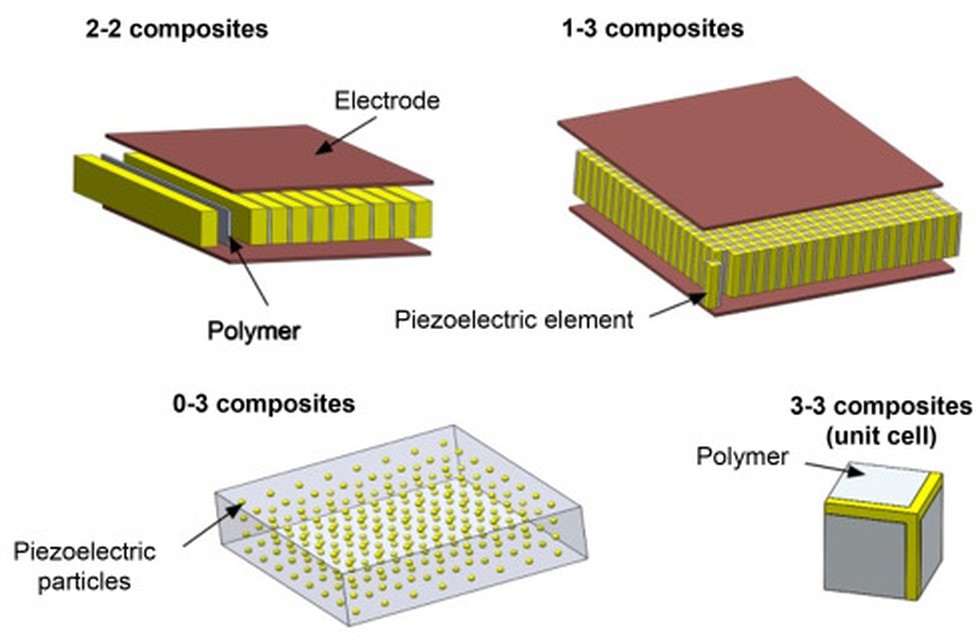
About Piezoelectric Polymers:
- These are polymers that can generate electric charges on the surface under pressure/strain thus converting mechanical energy into electrical energy.
- Characteristics
- These polymers have much higher piezoelectric stress constants indicating that they are much better sensors than ceramics.
- They have low dielectric constant, low elastic stiffness, and low density, which result in a high voltage sensitivity and low acoustic and mechanical impedance (crucial for medical and underwater applications).
- Piezoelectric polymeric sensors and actuators offer the advantage of processing flexibility because they are lightweight, tough, readily manufactured into large areas, and can be cut and formed into complex shapes.
- Polymers also typically possess a high dielectric breakdown and high operating field strength, which means that they can withstand much higher driving fields than ceramics.
Prelims Pointers
Aug. 30, 2024

About Unified Payments Interface (UPI) block mechanism:
- It is similar to the Application Supported by Blocked Amount (ASBA) facility that allows trading with blocked amounts.
- In the primary market, the facility ensures that money from an investor gets moved only when the allotment is completed.
- In the UPI block mechanism, clients can trade in the secondary market based on blocked funds in their bank accounts, instead of transferring the funds upfront to the trading member.
- The facility is currently optional for investors, and not mandatory for Trading Members (TMs) to offer as a service to clients.
- Significance: It provides enhanced protection to the client's funds and securities.
Key facts about Application Supported by Blocked Amount
- It was first introduced by SEBI in 2008.
- It is a process for making Initial Public Offerings (IPOs) or rights issue subscriptions.
- It is a facility provided by banks that allows investors to apply for an IPO or rights issue by blocking the application amount in their bank account instead of transferring the money to the issuer.
- Under ASBA, the investor's application money remains in their bank account, and only a block is created on the funds for the IPO application amount.
- This blocked amount remains in the investor's bank account until the allotment process is completed.
- Once the shares are allotted to the investor, the block is released, and only the amount for the allotted shares is deducted from the investor's account.
- In public issues and rights issues, all investors have to mandatorily apply through ASBA.
Prelims Pointers
Aug. 30, 2024
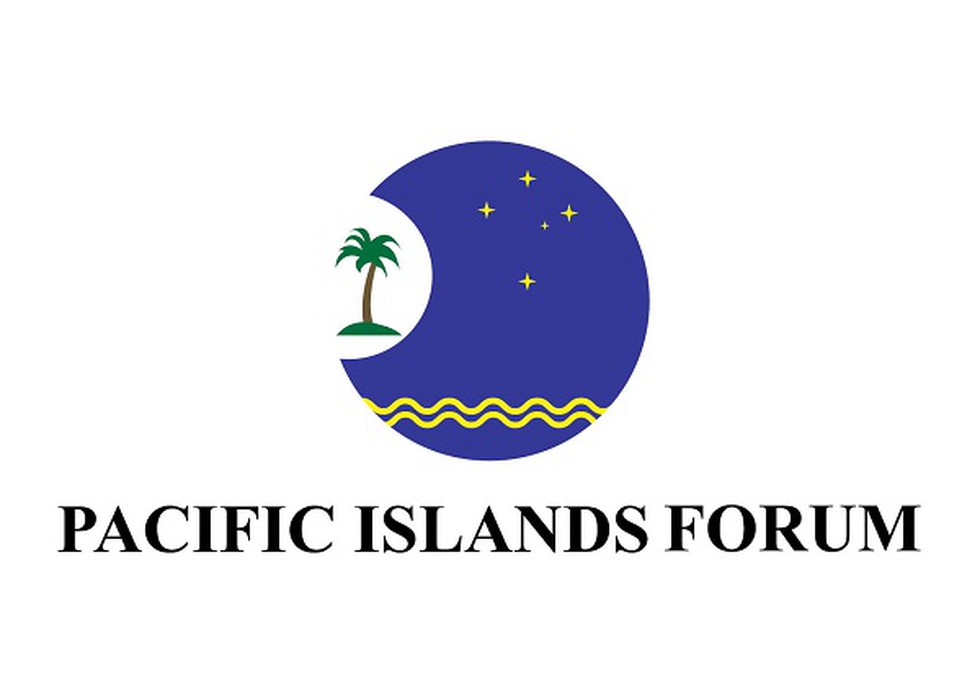
About Pacific Islands Forum:
- It is an intergovernmental organisation formed in 1971.
- Member countries: It consists of 18 member states located in the Pacific region.
- Australia, Cook Islands, Federated States of Micronesia, Fiji, French Polynesia, Kiribati, Nauru, New Caledonia, New Zealand, Niue, Palau, Papua New Guinea, Republic of Marshall Islands, Samoa, Solomon Islands, Tonga, Tuvalu, and Vanuatu.
- Aim:
- It aims to push for economic growth, enhance political governance and security for the region, and strengthen regional cooperation.
- Its vision is for a resilient Pacific region of peace, harmony, security, social inclusion and prosperity that ensures all the people in the region can lead free, healthy and productive lives.
- It discusses priority issues at its annual meeting, where decisions made by the member states are reached by consensus.
- The decisions are implemented by the Pacific Islands Forum Secretariat.
- PIF members have been pushing to raise funds for climate action. Notably, the Pacific Resilience Facility (PRF) — a regional financing facility established by PIF is currently $380 million short of its $500 million target.
Prelims Pointers
Aug. 30, 2024

About RESET Programme:
- The Retired Sportsperson Empowerment Training Programme is aimed at empowering the retired sports persons who have played for the country and brought immense laurels to the nation.
- It will support retired athletes on their career development journey by empowering them with the necessary knowledge and skills and making them more employable.
- It represents a significant step towards recognizing and utilizing the invaluable experience and expertise of our retired athletes.
- Eligibility:
- The athletes, who have retired from an active sports career and are aged between 20-50 years and who have been winners of an International Medal/participants in international events or have been National medallists/State medallists/participants in competitions recognized by National Sports Federations/Indian Olympic Association/Ministry of Youth Affairs and Sports are eligible to apply for courses under RESET Programme.
- Initially, the programmes will be of two levels based on educational qualifications viz., Class 12th and above and Class 11th and below.
- For this pilot phase of the RESET Programme, Lakshmibai National Institute of Physical Education (LNIPE) will be the lead institute to implement the Programme.
- The programme will be offered in hybrid mode consisting of self-paced learning through a dedicated portal, along with on-ground training and internship.
- Internships will be provided in sports organizations, sporting competitions/training camps, and leagues. Further, placement assistance, guidance for entrepreneurial ventures, etc. will be provided upon successful completion of the course.
Aug. 29, 2024
Prelims Pointers
Aug. 29, 2024
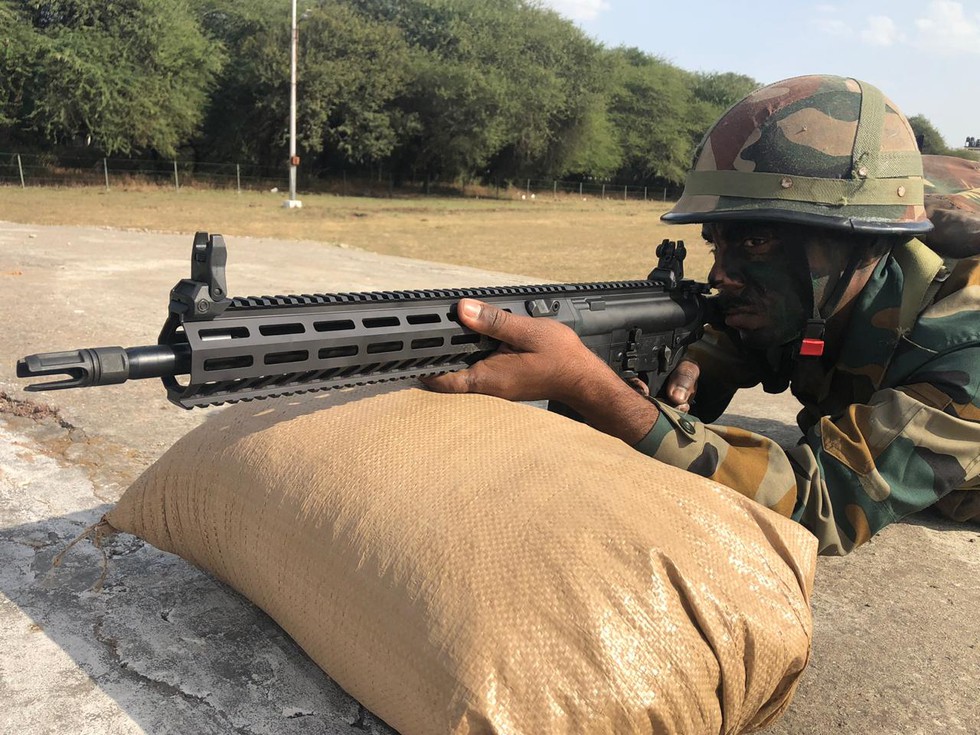
About SIG 716 Rifle:
- It is an American-made automatic assault rifle.
- It is manufactured by the United States firearms maker, Sig Sauer.
- In India, the army has extensively integrated the SIG 716 into its ranks, particularly for troops operating in mountainous areas and critical border regions.
- Features:
- The rifle has a total length of 34.39 inches and a barrel length of 15.98 inches.
- Its total weight is 3.58 kg.
- It has a higher recoil and higher calibre, meant to shoot-to-kill targets at 600 metres.
- These rifles have a high-powered 7.62x51mm caliber, offering longer range and greater lethality than the existing INSAS and AK-47 rifles currently in service of Indian armed forces.
- Its gas piston system enhances reliability and reduces maintenance needs.
- The modularity of the SIG 716 allows for easy adaptation to various roles through the simple addition of accessories on its Picatinny rail, making this rifle extremely versatile for armed forces and specialized tactical units.
Prelims Pointers
Aug. 29, 2024
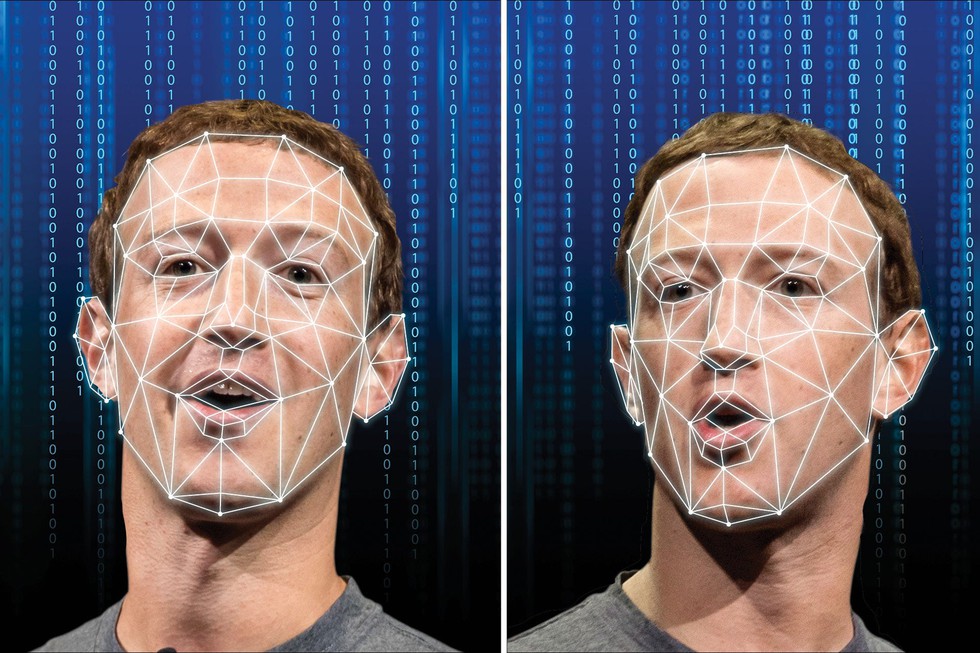
About Deepfakes:
- Deepfakes are synthetic media, including images, videos, and audio, generated by Artificial Intelligence (AI) technology that portray something that does not exist in reality or events that have never occurred.
- The term deepfake combines deep, taken from AI deep-learning technology (a type of machine learning that involves multiple levels of processing), and fake, addressing that the content is not real.
- It can create people who do not exist, and it can fake real people saying and doing things they did not say or do.
- Background: The origin of the word “deepfake” can be traced back to 2017, when a Reddit user with the username “deepfakes”, posted explicit videos of celebrities.
- Working:
- They are created by machine learning models, which use neural networks to manipulate images and videos.
- To make a deepfake video of someone, a creator would first train a neural network on many hours of real video footage of the person to give it a realistic “understanding" of what he or she looks like from many angles and under different lighting.
- Then they combine the trained network with computer-graphics techniques to superimpose a copy of the person onto a different actor.
- Deepfake technology is now being used for nefarious purposes like scams and hoaxes, celebrity pornography, election manipulation, social engineering, automated disinformation attacks, identity theft, and financial fraud.
- They differ from other forms of false information by being very difficult to identify as false.
Prelims Pointers
Aug. 29, 2024
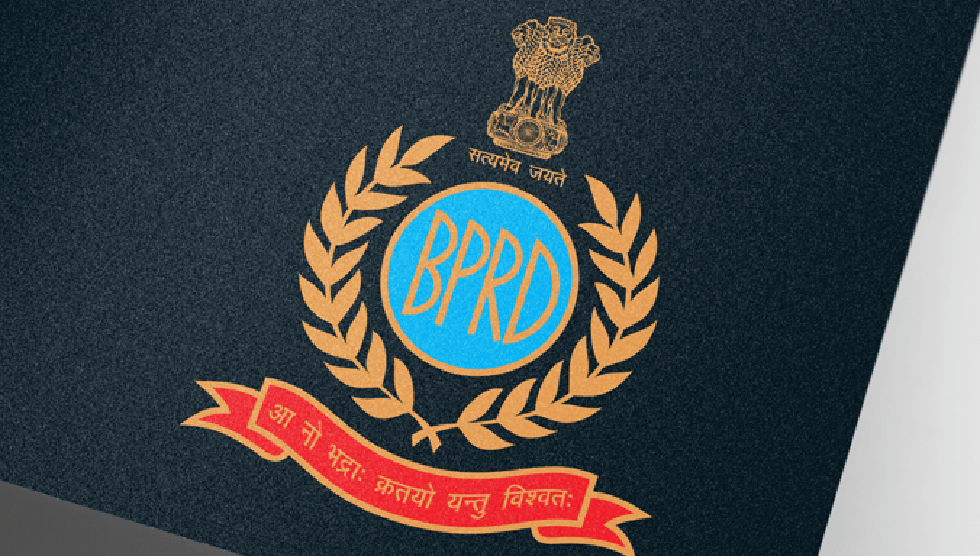
About Bureau of Police Research and Development (BPR&D):
- BPR&D was set up in 1970 under the Union Ministry of Home Affairs by replacing the Police Research and Advisory Council.
- Headquarters: New Delhi
- It was established with a mandate to:
- Identify the needs and problems of the police in the country.
- Undertake research projects and studies, and suggest modalities to overcome problems and challenges and meet the needs and requirements of the police.
- Keep abreast of the latest developments in the fields of science and technology, both in India and abroad, with a view to promoting the use of appropriate technology in police work.
- Over the years, the BPR&D has also been entrusted with the responsibility of monitoring the training needs and quality of training in the States and Central Police Organisations, and providing assistance for the same, as well as assisting the States in the modernization of the State Police Forces and Correctional Administration.
- BPR&D has also been tasked to assist the Ministry of Home Affairs and the CPFs, etc., in the development of Standards, Quality Requirements (QRs), etc., with respect to various types of equipment and items pertaining to infrastructure.
- More recently, the BPR&D has also been entrusted with the responsibility of anchoring and coordinating the work of the National Police Mission.
- The Bureau was initially established with the following two divisions; Research, Statistics & Publication and Development.
- On the recommendations of the Gore-Committee, the bureau created a Training Division in 1973.
- The BPRD has five Central Detective Training Institutes at Kolkata, Hyderabad, Chandigarh, Ghaziabad, and Jaipur dedicated to the training of police officers and other stakeholders.
Prelims Pointers
Aug. 29, 2024
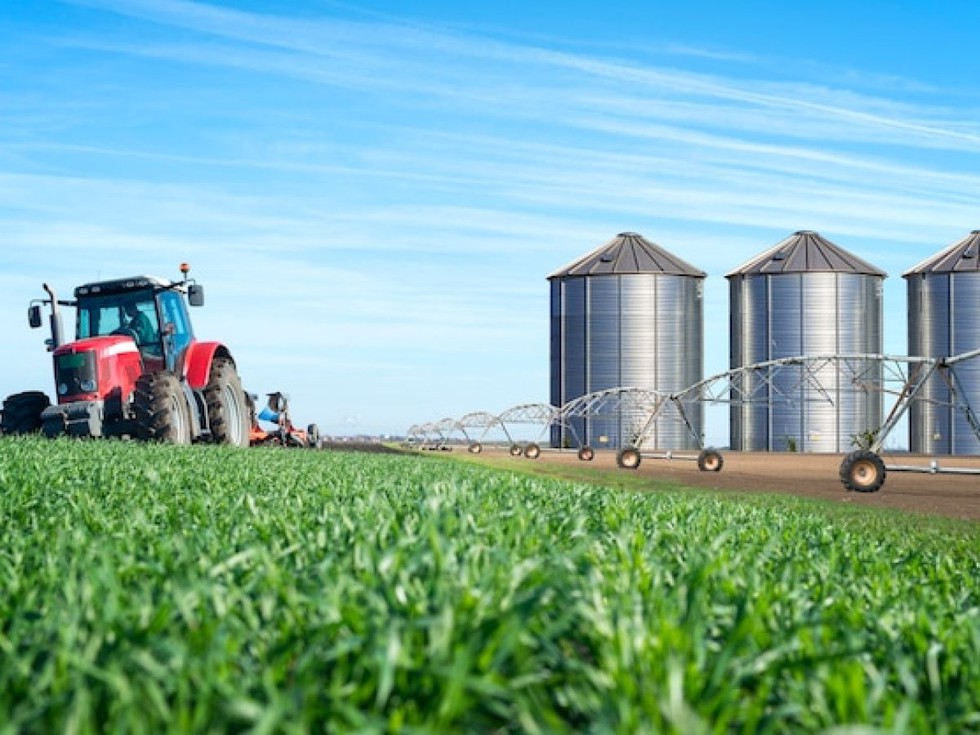
About Agriculture Infrastructure Fund (AIF) Scheme:
- It is a Central Sector Schemewhich was launched in 2020.
- Objective: The scheme shall provide a medium- to long-term debt financing facility for investment in viable projects for post-harvest management infrastructure and community farming assets through interest subvention and financial support.
- The duration of the Scheme shall be from FY2020 to FY2032 (10 years).
- Who is eligible?
- Primary Agricultural Credit Societies (PACS)
- Marketing Cooperative Societies
- Farmer Producers Organizations (FPOs)
- Farmers
- Self Help Group (SHG)
- Joint Liability Groups (JLG)
- Multipurpose Cooperative Societies
- Agri-entrepreneurs and Startups
- Central/State agency or Local Body sponsored Public-Private Partnership Projects.
- Exclusions: Public Sector Undertakings (PSUs) are not directly eligible under the scheme, but projects sponsored by them under PPP are eligible.
- All scheduled commercial banks, scheduled cooperative banks, Regional Rural Banks (RRBs), Small Finance Banks, Non-Banking Financial Companies (NBFCs), and National Cooperative Development Corporation (NCDC) may participate to provide this financing facility.
- If required, need-based refinance support will be made available by NABARD to all eligible lending entities, including cooperative banks and RRBs, as per its policy.
- Features:
- All loans up to a limit of ₹ 2 crores under this financing facility will have interest subvention of 3% per annum. This subvention will be available for a maximum period of 7 years.
- An applicant can put up to 25 projects in different locations, and each of such projects will be eligible under the scheme for a loan upto ₹ 2 crore.
- This limit of 25 projects is applicable to private sector entities, such as farmers, Agri entrepreneurs, and start-ups.
- This limitation of 25 projects will not be applicable to state agencies, cooperatives, national and state federations of cooperatives, FPOs, federations of FPOs, SHGs, and federations of SHGs.
- Multiple projects in one location are also eligible with an overall cap of ₹2 crore.
- Under the scheme, it is mandatory for borrowers to contribute at least 10% of total project cost, irrespective of available capital subsidy.
- The moratorium for repayment under this financing facility may vary, subject to a minimum of 6 months and a maximum of 2 years.
- 24% of total grants–in–aid under the scheme should be utilized for SC/ST entrepreneurs (16% for SC and 8% for ST).
- Besides this, lending institutions would ensure adequate coverage of entrepreneurs belonging to women, and other weaker sections of society may be provided loans on a priority basis.
- Credit guarantee coverage will be available for eligible borrowers from this financing facility under the Credit Guarantee Fund Trust for Micro and Small Enterprises (CGTMSE) scheme for a loan up to Rs. 2 crores. The fee for this coverage will be paid by the Government.
- In the case of FPOs, the credit guarantee may be availed from the facility created under the FPO promotion scheme of the Department of Agriculture, Cooperation & Farmers Welfare (DACFW).
Prelims Pointers
Aug. 29, 2024
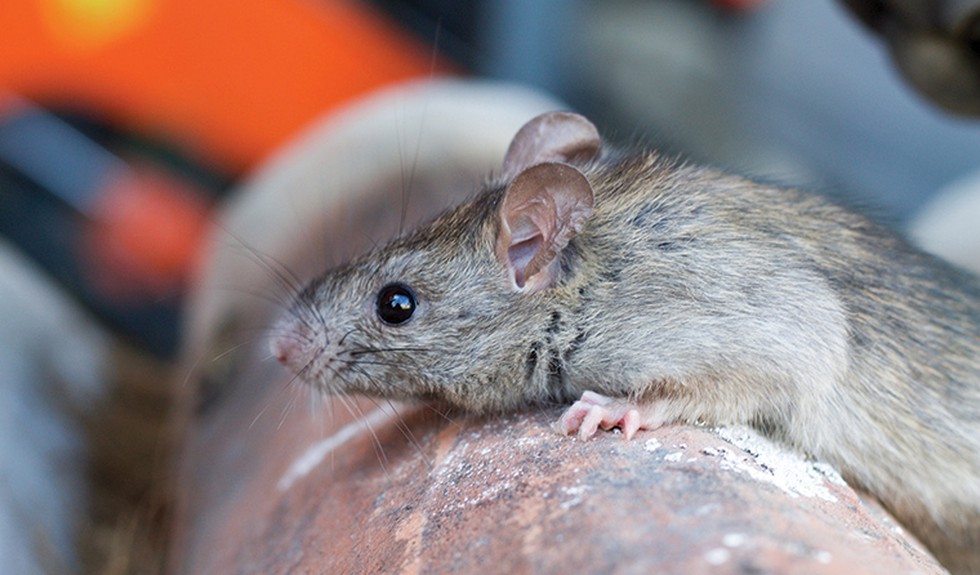
About Leptospirosis:
- Leptospirosis, also known as “rat fever”, is a rare bacterial infection that affects people and animals.
- The disease is caused by a bacterium called Leptospira interrogans, or Leptospira.
- It is most common in tropical areas and warmer climates with high rainfall each year.
- Transmission:
- The carriers of the disease can be either wild or domestic animals, including rodents, cattle, pigs, and dogs.
- Infected animals spread the bacteria through their urine. They may continue to urinate the bacteria into the environment for several months or years.
- The bacteria can survive in contaminated water or soil for weeks to months.
- It is not spread from person to person, except in very rare cases.
- Symptoms: It generally takes 2-30 days to get sick after having contact with the bacteria. Leptospirosis may occur in two phases.
- In the first phase, people may have fever, chills, headache, muscle aches, vomiting, or diarrhea. The person may feel better for a while but become ill again.
- Some people may suffer a more severe second phase with kidney or liver failure, or inflammation of the membrane around the brain and spinal cord (meningitis).
- Treatment: It can be treated with antibiotics, including penicillin and doxycycline.
Prelims Pointers
Aug. 29, 2024

About National Teachers’ Award:
- The purpose of this award is to celebrate the unique contribution of some of the finest teachers in the country and to honor those teachers who through their commitment and industry have not only improved the quality of school education but also enriched the lives of their students.
- This award is conferred on the exemplary teachers/faculty members of higher education institutions and Polytechnics.
- Eligibility: The award is open to all the faculty members of colleges/universities/higher educational institutions/polytechnics in India. The candidates should satisfy the following conditions:
- The nominee should be a regular faculty member.
- He must have at least five years of full-time experience (undergraduate or postgraduate level).
- The nominee should not be over 55 years of age as of the last date of receiving the application for the awards.
- Vice-Chancellor/Director/Principal (regular or officiating) are not eligible to apply. However, individuals who were in such positions, but below 55 years of age and still in active service are eligible.
- The winners will receive a medal and a certificate worth Rs 50,000.
Prelims Pointers
Aug. 29, 2024

About National Industrial Corridor Development Programme (NICDP):
- It is India's most ambitious infrastructure programme aiming to develop new industrial cities as "Smart Cities" and converging next generation technologies across infrastructure sectors.
- It aims to facilitate investments from both large anchor industries and Micro, Small, and Medium Enterprises (MSMEs), serving as catalysts to achieve the government's ambitious goal of $2 trillion in exports by 2030.
- Under this programme the newly sanctioned industrial areas are:
- Khurpia in Uttarakhand, Rajpura-Patiala in Punjab, Dighi in Maharashtra, Palakkad in Kerala, Agra and Prayagraj in Uttar Pradesh, Gaya in Bihar, Zaheerabad in Telangana, Orvakal and Kopparthy in Andhra Pradesh, and Jodhpur-Pali in Rajasthan.
- These sites will soon host state-of-the-art industrial smart cities, each designed to foster a vibrant industrial ecosystem. The proposed industrial nodes would focus on creating regional manufacturing hubs across the country.
- The development of these industrial cities is envisioned as greenfield smart cities built to global standards, embodying the 'plug-n-play' and 'walk-to-work' concepts.
- This innovative approach ensures that the cities will be equipped with advanced infrastructure designed to support sustainable and efficient industrial operations.
- The projects are closely aligned with the PM GatiShakti National Master Plan, which focuses on integrated and seamless multi-modal connectivity.
Prelims Pointers
Aug. 29, 2024
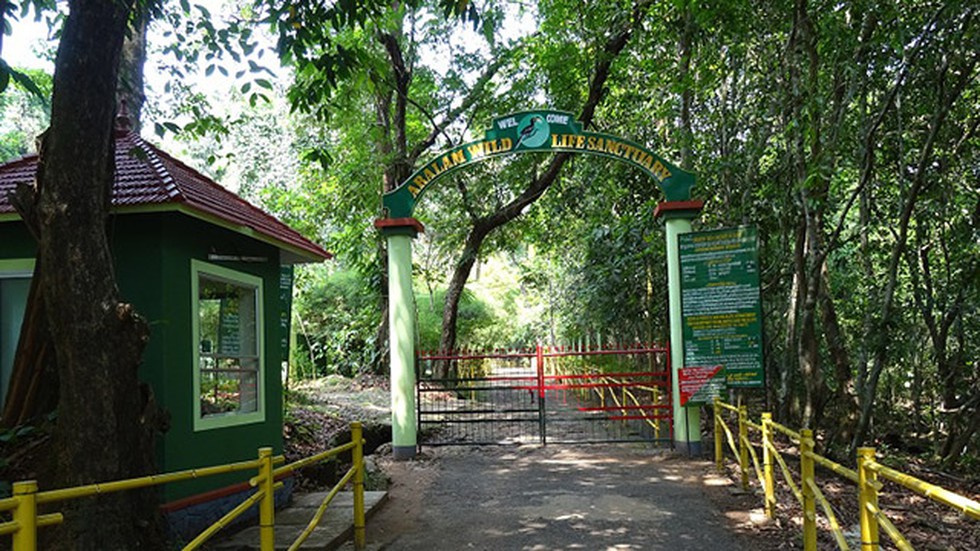
About Aralam Wildlife Sanctuary:
- Location: It is located on the western slopes of Western Ghats and it is the northernmost wildlife sanctuary of Kerala.
- It is contiguous with Wayanad-Brahmagiri, Wayanad’s northern slopes and the Protected Areas of Karnataka State namely the Brahmagiri Wildlife Sanctuary and also the forests of Coorg.
- Rivers: The Cheenkannipuzha river forms the main drainage system on the southern side. Other rivers found here are: Narikkadavu thodu, Kurukkathodu and Meenumuttithodu.
- Vegetation: It includes West Coast tropical evergreen forest, west coast semi-evergreen forests, South Indian moist deciduous forest, Southern hilltop evergreen forest and plantations.
- It is the only protected area of the West Coast Tropical Evergreen forest of Dipterocarpus-Mesua- Palaquium type.
- Highest peak of this sanctuary is Katti Betta.
- Flora: The major tree species are Artiocarpus heterophyllus, Bishofia javanica, Calophyllum elatum, Cannarium strictum,Cullenia exarillita, Dipterocarpus sp, Drypetes elata, Dysoxylum malabaricum, Elaeocarpus tuberculatus etc.
- Fauna: Elephant, Gaur, Tiger, Panther,Sambar, Spotted deer, Barking deer, Wild boar, Sloth bear, Nilgiri langur, Bonnet macaque, Common langur, Wild dog, common otter, Malabar giant squirrel etc are the major mammals.
Prelims Pointers
Aug. 29, 2024

About ANUBHAV Awards:
- It recognizes the contribution made by Retired Officials to Nation building while working in Government and to document the administrative history of India by written narratives.
- The ANUBHAV Portal, established in March 2015, serves as an online platform for retiring and retired government employees to share their experiences.
- The portal was launched by the Department of Pension & Pensioners’ Welfare under the Union Ministry of Personnel, Public Grievances & Pensions.
- Objectives
- It aims to create a database of significant suggestions and work experiences.
- It channels the human resource of retiring employees for nation building.
- It aims to enable Ministries/ Departments to take crucial steps while considering useful and replicable suggestions.
- Eligibility:To participate in the scheme, retiring Central Government employees/pensioners are required to submit their Anubhav write ups, 8 months prior to retirement and up to 1 year after their retirement.
- Thereafter, the write-ups will be published after assessment by concerned Ministries/Departments. The published write-ups will be shortlisted for Anubhav Awards and Jury Certificates.
- Each ANUBHAV Awardees will be felicitated with a medal and certificate and a Prize of 10,000 rupees, whereas a Jury certificate Winner will be presented with a medal and a certificate.
Prelims Pointers
Aug. 29, 2024
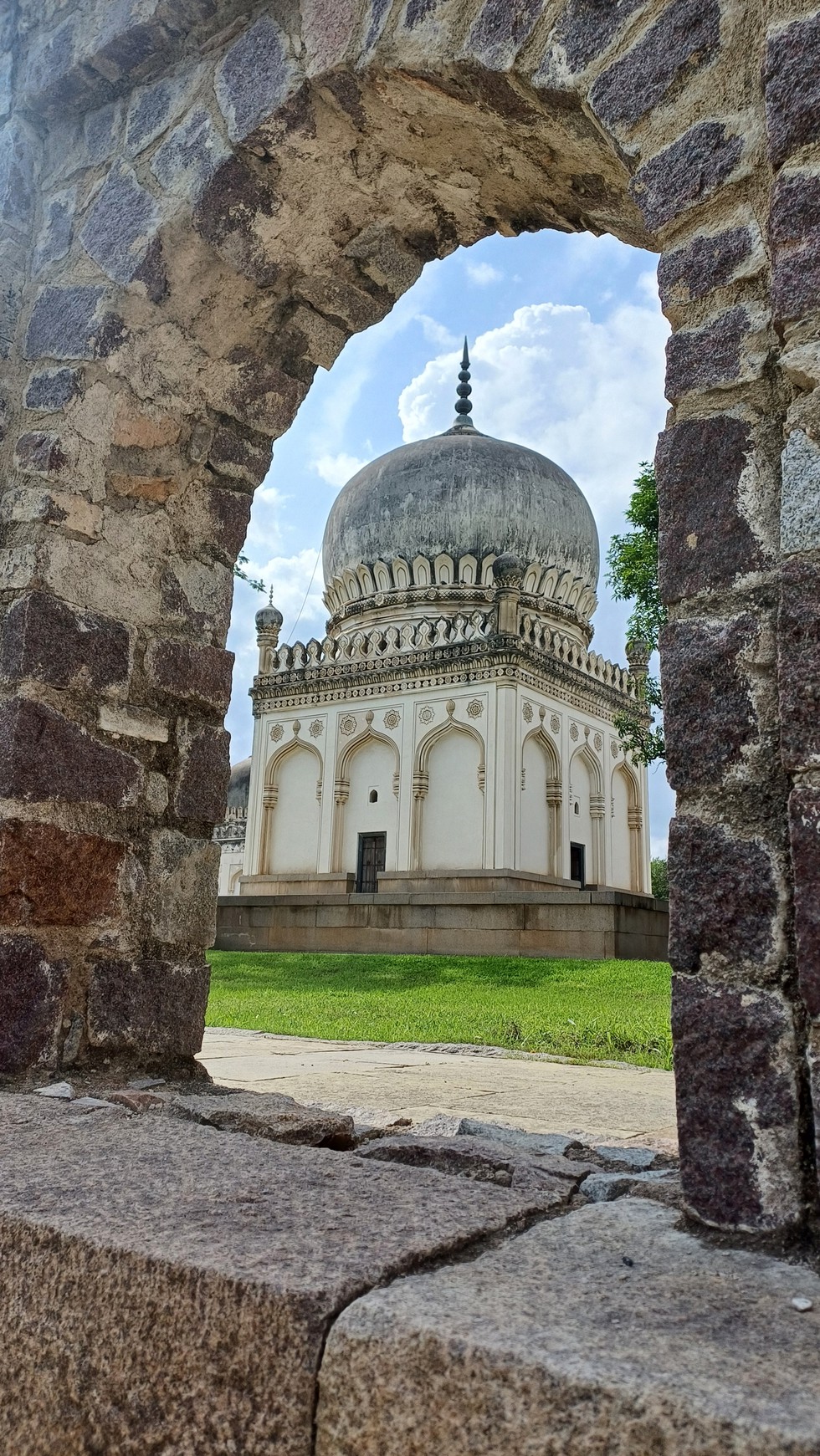
About Qutb Shahi tomb complex:
- It was built by the Qutb Shahi dynasty that ruled the region from 1518 A.D. to 1687 A.D.
- This complex is located in - Ibrahim bagh in Hyderabad.
- It consists of 30 tombs, mosques and a mortuary bath. The tombs belong to the rulers of the Qutb Shahi Dynasty.
- It is a 500-year-old cluster of grand mausoleums, idgah, graves, funerary mosques, a hammam (bath), and baolis (stepwells).
- Architecture style:
- It collectively constitutes an outstanding example of an Indo-Muslim dynastic necropolis.
- These tombs are present in a large group on a raised platform. They resemble Persian, Pathan and Hindu architectural styles that make use of grey granite, with stucco ornamentation and is a one-of-its-kind place in the world where the whole dynasty is buried at a single spot.
- They lie amidst beautifully landscaped gardens with intricately carved stonework.
Key facts about Qutb Shahi dynasty
- It ruled the kingdom of Golcondain the southeastern region of Deccan. It was one of the five successor states of the Bahmanī kingdom.
- Its founder was Qulī Quṭb Shah, a Turkish governor of the Bahmanī region.
- Time period: 1518–1687
- Quṭb Shah declared his independence in 1518 and moved his capital to Golconda.
- Towards the end of the century, Muḥammad Qulī Quṭb Shah built a new capital at Hyderabad.
- The kingdom stretched from the Godavari river in the north, sharing a border with Tamil Nadu to the south, Bijapur to the west, and the Bay of Bengal to the east.
Aug. 28, 2024
Prelims Pointers
Aug. 28, 2024
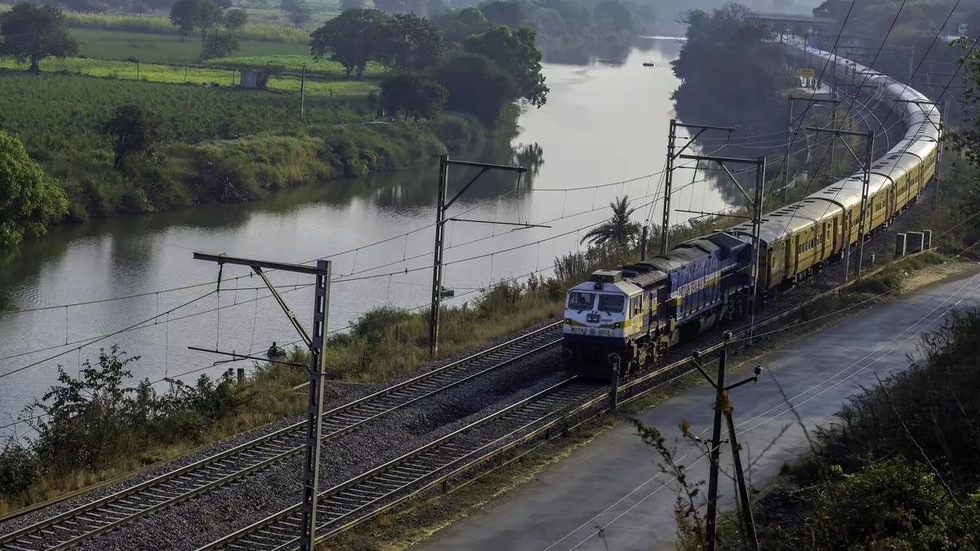
About Initiative:
- Indian Railways is actively exploring using nuclear power through captive units as part of its strategy to increase reliance on non-fossil fuel sources.
- The first nuclear-powered train movements are expected to focus on circuits served by the Nabinagar Thermal Power Plant, leveraging existing infrastructure to test and expand nuclear energy use in rail transport.
What are Nuclear-Powered Trains?
- Nuclear-powered trains utilise the heat generated from a nuclear reaction to produce steam, which drives turbines. One turbine powers the train, while another generates electricity for auxiliary systems such as lighting and air conditioning.
- The idea of nuclear-powered trains gained attention in the 1950s, especially in the USSR, where it became a goal of the Ministry of Transport.
How Do Nuclear-Powered Trains Function?
- Design: These trains would feature a portable nuclear reactor. The reactor heats a fluid to produce steam, which then powers electric turbines. These turbines generate the necessary electricity to propel the train.
- Thorium reactors: Thorium-based reactors are considered for their lower radiation risks compared to other nuclear materials. The design of the reactors incorporates advanced safety mechanisms to minimize risks and prevent potential misuse.
Prelims Pointers
Aug. 28, 2024
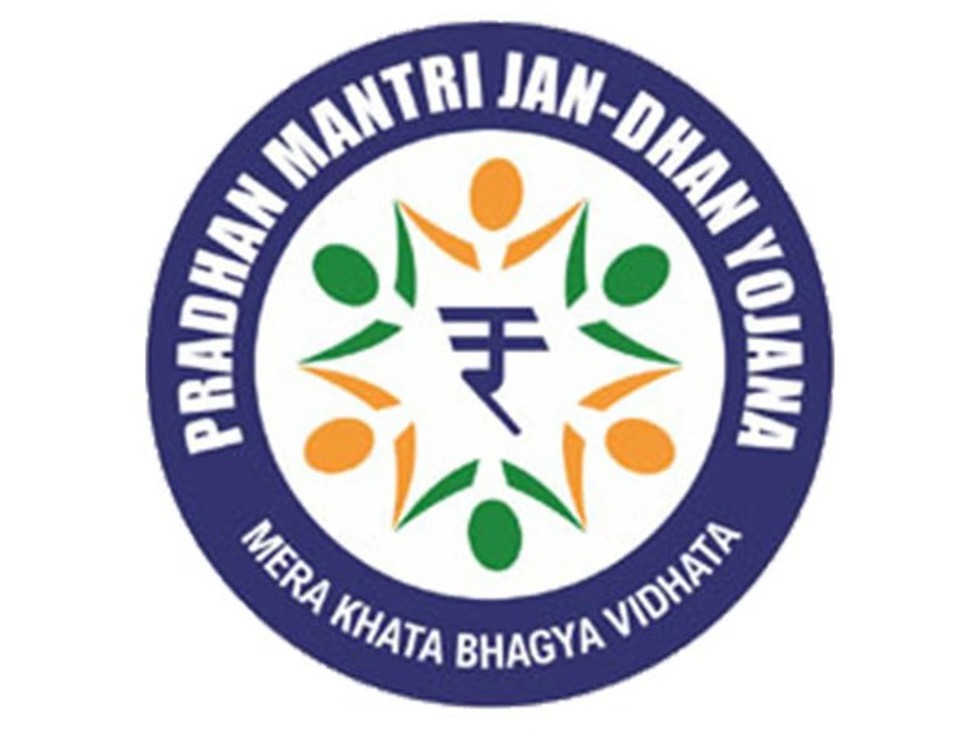
About Pradhan Mantri Jan Dhan Yojana (PMJDY):
- Launch date: August 28, 2014
- Objective: To promote financial inclusion by providing access to financial services, including banking/savings accounts, remittance, credit, insurance, and pensions, affordably.
- Significance: Forms the backbone for several government economic initiatives and facilitates Direct Benefit Transfers (DBTs).
- Eligibility:
- The applicant should be an Indian National.
- The applicant should be aged between 18 and 59 years.
- If minors above ten years apply, they will require support from their legal guardians to administer their PMJDY account.
- Jan Dhan Account:
- An individual can open an account under this scheme with any bank branch or Business Correspondent (Bank Mitra) outlet.
- Accounts opened under PMJDY can be opened with zero balance. However, if the account holder wishes to get a chequebook, she/he will have to fulfil the minimum balance criteria.
- The account holders under this scheme will be given a RuPay debit card which can be used across all ATMs for cash withdrawal.
Scheme highlights:
- Zero-balance accounts: Accounts can be opened with no minimum balance requirement.
- RuPay debit card: Provides a free RuPay debit card with in-built accident insurance coverage.
- Accident insurance: Up to ₹2 lakh.
- Life insurance: Up to ₹30,000 for eligible first-time account holders.
- Overdraft facility:
- Up to ₹10,000 is available to one account per household, with an additional ₹5,000 loan after six months of satisfactory account activity.
- Coverage focus:6% of accounts are in rural and semi-urban areas, with 55.6% of account holders being women.
- Banking access: 95% of inhabited villages have banking facilities within a 5 km radius.
Recent developments:
- Account growth:
- Accounts increased from 72 crore in March 2015 to 53.13 crore by August 2024.
- Deposits in PMJDY accounts surged from ₹15,670 crore (March 2015) to over ₹2.31 lakh crore (August 2024).
- Financial Year 2024-25 target: The government aims to open an additional 3 crore PMJDY accounts.
- Operative accounts: Out of 173 crores CASA accounts in the country, over 53 crores are PMJDY accounts, with an 80% operation rate.
Prelims Pointers
Aug. 28, 2024

- What are Fixed-Dose Combination (FDC) drugs?
- Fixed-dose combination (FDC) drugs are medications that combine two or more Active Pharmaceutical Ingredients (APIs) in a single dosage form, such as a pill, capsule, or injection.
- These drugs are often prescribed for conditions requiring multiple medications, such as tuberculosis, diabetes, and hypertension, to enhance patient compliance by reducing the number of pills taken daily.
- The rationale for the Ban: The banned FDCs were deemed "irrational" by the central government, as they do not provide any additional therapeutic benefits.
- The combinations in these FDCs may involve ingredients that either do not work synergistically or include unnecessary components that do not require simultaneous administration.
- Benefits: FDCs can improve patient compliance, especially for chronic diseases where multiple medications are required.
- Risks: Some FDCs may include unnecessary components, leading to patients consuming drugs they don't need.
- For example, Cheston Cold includes paracetamol, cetirizine, and phenylephrine, which are not necessary for treating bacterial infections but are used for managing cold symptoms.
- Banned FDCs: The recent ban includes various drug combinations:
- Gastrointestinal treatments: Enzyme combinations for digestive issues.
- Anti-allergy treatments: Combinations of levocetirizine with nasal decongestants, and cough syrups with mucus-breaking properties.
- Skin treatments: FDCs like menthol with aloe vera, and silver sulfadiazine with antiseptics.
- Migraine and menstrual pain: Combinations for treating migraines and menstrual cramps.
- Erectile dysfunction: Combinations involving sildenafil (Viagra) with other drugs affecting blood vessels and muscles.
- Concerns with FDCs:
- Overuse of antibiotics: Some FDCs include combinations of antibiotics, leading to their overuse and contributing to the growing issue of antibiotic resistance. This occurs when bacteria become resistant to commonly used antibiotics, necessitating stronger or higher doses for treatment.
- Lack of therapeutic justification: Many FDCs combine drugs that do not require co-administration, potentially exposing patients to unnecessary medications, which could result in adverse effects.
- Avoidance of pricing control: Some pharmaceutical companies create FDCs to circumvent government-imposed price controls on essential medicines. By introducing new combinations, they can set higher prices, undermining efforts to make essential drugs affordable.
Prelims Pointers
Aug. 28, 2024

About Tropical Cyclone:
- Formation:
- These cyclones originate over warm ocean waters near the equator. Warm, moist air rises from the ocean surface, creating a low-pressure area.
- Surrounding higher-pressure air moves towards this low-pressure zone, causing the air to warm up and rise further. As the rising air cools, it forms clouds.
- This system of spinning clouds and wind intensifies with the ocean’s heat. As wind speeds increase, an eye forms at the centre.
Characteristics of a Tropical Cyclone:
- Calm centre: The cyclone’s centre is typically calm and clear, with very low air pressure.
- Speed: The average wind speed is around 120 km/h.
- Closed isobars: These cyclones have closed isobars, leading to higher wind velocities.
- Origin: They form exclusively over oceans and seas.
- Movement: Tropical cyclones move from east to west, are influenced by trade winds, and are seasonal.
Classification of Cyclones:
- Cyclones are categorised by the Indian Meteorological Department (IMD) based on wind speeds:
- Depression: Wind speeds between 31–49 km/h
- Deep depression: Wind speeds between 50-61 km/h
- Cyclonic storm: Wind speeds between 62–88 km/h
- Severe cyclonic storm: Wind speeds between 89-117 km/h
- Very severe cyclonic storm: Wind speeds between 118-166 km/h
- Extremely severe cyclonic storm: Wind speeds between 166-221 km/h
- Super cyclonic storm: Wind speeds above 222 km/h
Naming of Tropical Cyclones:
- Tropical cyclones are named by one of five regional bodies:
- ESCAP/WMO Typhoon Committee
- WMO/ESCAP Panel on Tropical Cyclones
- RA I Tropical Cyclone Committee
- RA IV Hurricane Committee
- RA V Tropical Cyclone Committee
- In the Indian Ocean, the WMO/ESCAP Panel on Tropical Cyclones is responsible for naming cyclones.
Prelims Pointers
Aug. 28, 2024
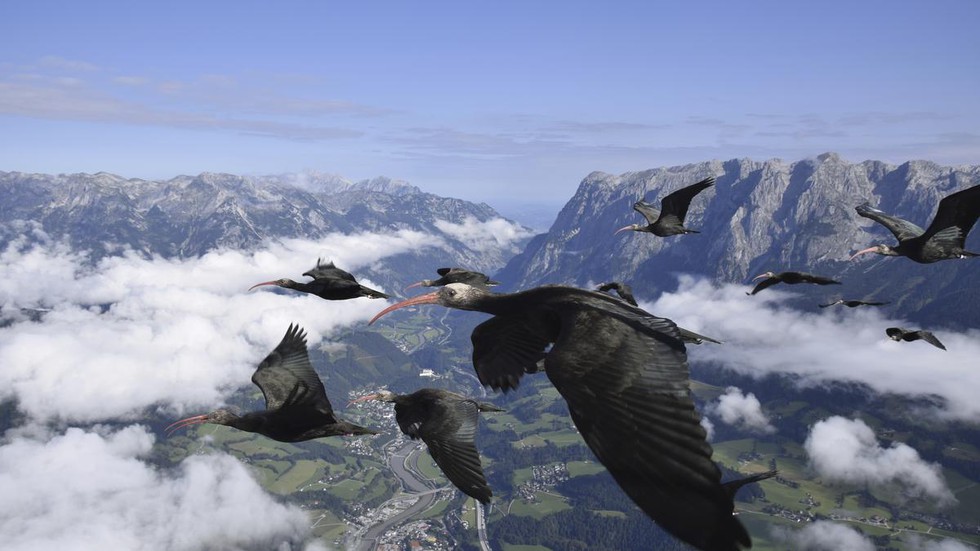
About Northern Bald Ibis:
- Scientific Name: Geronticus eremita
- Conservation status: Endangered (formerly Critically Endangered)
- Historical range: Once native to Central Europe until the 17th century, also found in North Africa and the Arabian Peninsula.
- Extinction in Europe: The species became extinct in Central Europe by the 17th century due to excessive hunting.
- Distinctive features: The Northern Bald Ibis is known for its black plumage with an iridescent green sheen, a bald red head adorned with black markings, and a long, downward-curved beak.
- Their red beak and legs stand out against their dark feathers. There is no sexual dimorphism in this species.
- Diet: They primarily feed on insect larvae, earthworms and other invertebrates, using their long, slender beak to probe the ground, guided by their sense of touch.
- Habitat: These ibises prefer open areas with short grass, such as meadows, pastures, or even sports fields like golf courses. Despite their bald head resembling that of a vulture, they are not scavengers.
- Social behaviour: Northern Bald Ibises are social birds, historically forming large colonies with thousands of individuals.
- They engage in a ritual greeting involving crest-spreading and bowing, which often triggers a similar response throughout the colony.
- Monogamy: Typically, seasonally monogamous, breeding partnerships often change yearly, though some pairs may stay together for multiple years.
- Breeding habits: They choose steep rock faces with protective nooks for nesting, laying up to four greenish eggs. Incubation begins with the first egg, leading to staggered hatching times.
Nestling development: Young birds fledge within 42-50 days, initially following their parents before joining juvenile groups. They learn migration routes by following experienced birds during the fall migration.
Prelims Pointers
Aug. 28, 2024
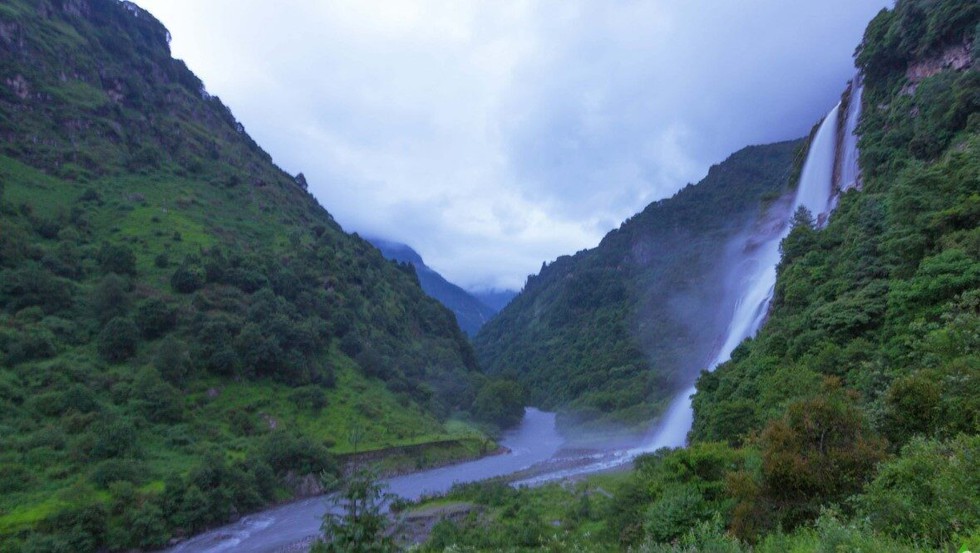
About Talley Valley Wildlife Sanctuary:
- It is located in the Lower Subansiri district of Arunachal Pradesh.
- It is a plateau and covers an area of 337 sq. km.
- It is situated at an altitude of 2400 metres, with rivers like Pange, Sipu, Karing, and Subansiri flowing through the sanctuary.
- The sanctuary is home to the Apatani tribe, known for their unique customs, traditions, and handicrafts.
- Flora:
- It has a stunning spectrum of subtropical and alpine forests like silver fir trees, ferns, orchids, bamboo and rhododendrons.
- Pleioblastus simone, one of its kind of bamboo, can be found only in Talley Valley.
- It is also home to several medicinal plants and herbs used by the local tribes for traditional medicine.
- Fauna: It is home to a variety of animal species such as elephants, barking deer, giant squirrels, porcupines, leopards, clouded leopards, wild boars, etc.
Prelims Pointers
Aug. 28, 2024
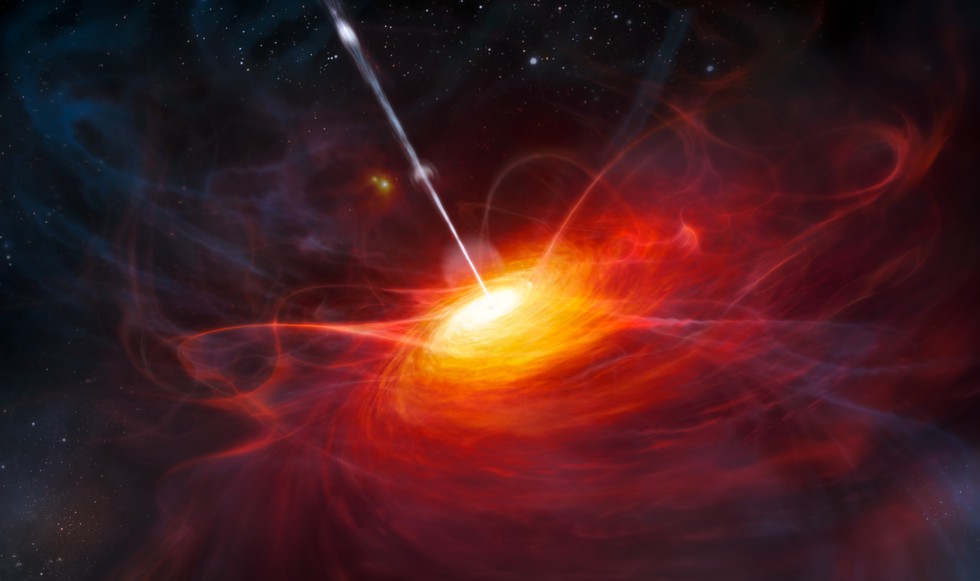
About Quasar:
- A quasar is an extremely active and luminous type of Active Galactic Nucleus (AGN).
- An AGN isnothing more than a supermassive black hole that is active and feeding at the center of a galaxy.
- All quasars are AGNs, but not all AGNs are quasars.
- Quasar is short for quasi-stellar radio source because astronomers first discovered quasars in 1963 as objects that looked like stars but emitted radio waves.
- Quasars are intense sources of X-raysas well as visible light. They are the most powerful type of X-ray source yet discovered.
- They are among the most luminous, powerful, and vibrant objects known in the universe.
- How are they formed?
- Quasars are thought to form in regions of the universe where the large-scale density of matter is much higher than average.
- An active galaxy is one in which the central supermassive black hole is consuming large amounts of matter.
- The infall of matter into the black hole is so great that all the material can't enter the black hole at the same time, so it forms a queue as a spiralling accretion disk.
- The matter—in the form of huge clouds—falls into the disk, with the inner parts of the cloud closer to the black hole orbiting faster than the outer parts (just like planets closer to the sun orbit faster than those farther away).
- This creates a shear force that twists the clouds, causing them to bump into their neighbours as they move around the black hole at velocities ranging from 10% of the speed of light up to over 80%.
- This friction from fast-moving gas clouds generates heat, and the disk becomes so hot—millions of degrees—that it shines brightly.
- Some of the material in the disk is also funnelled away from the black hole in a highly luminous, magnetically collimated jet.
- The hot accretion disk and the jet combine to make the nucleus of the active galaxy shine so brightly that it can be seen far across the universe.
The brightest quasars can outshine all of the stars in the galaxies in which they reside, which makes them visible even at distances of billions of light-years away.
Prelims Pointers
Aug. 28, 2024
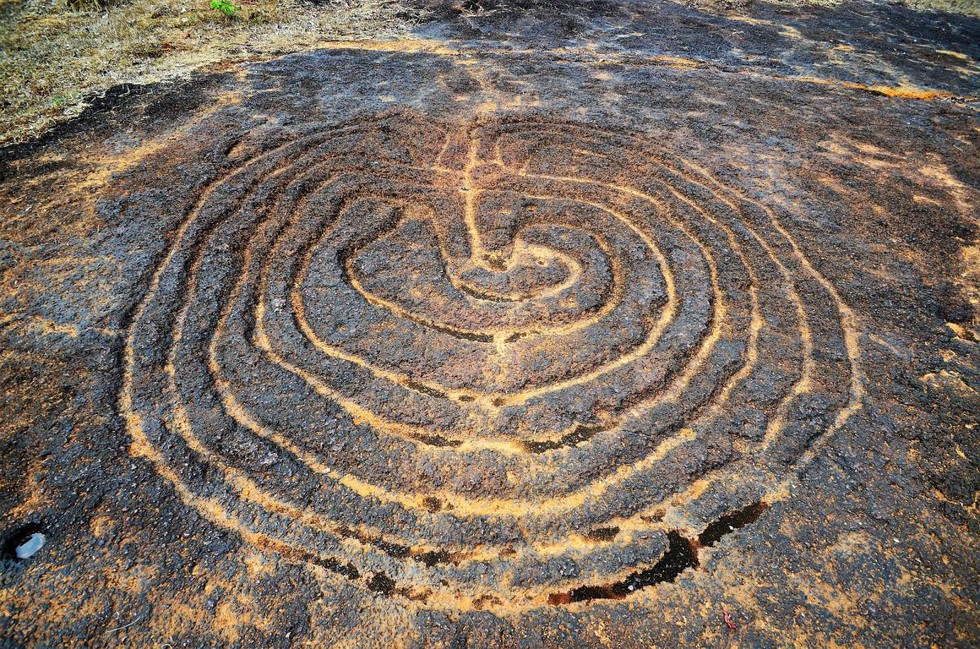
About Geoglyphs:
- A geoglyph refers to a design that is drawn on the earth.
- Geoglyphs are typically formed of durable elements of the landscape, such as stones, gravel, or earth.
- A geoglyph is usually longer than four metres.
- Geoglyphs are difficult to see or even identify on the ground but are easily appreciated when seen from the sky.
- There are two types of geoglyphs, namely a positive and negative geoglyph.
- A positive geoglyphis formed by the arrangement and alignment of materials on the ground in a manner akin to petroforms (which are simply outlines created using boulders).
- A negative geoglyphis formed by removing part of the natural ground surface to create differently coloured or textured ground in a manner akin to petroglyphs.
- There is another variation of a geoglyph that involves seeding plants in a special design.
- The design usually takes years to see since it depends on the plants growing. This type of geoglyph is called an arborglyph.
- Another type of geoglyph often referred to as ‘chalk giants’ are those carved into hillsides, exposing the bedrock beneath.
- Examples: The most famous geoglyphs are the Nasca lines in Peru and the horse and human figures cut into hillsides in southern England (e.g., the Uffington White Horse and the Cerne Giant).
Prelims Pointers
Aug. 28, 2024
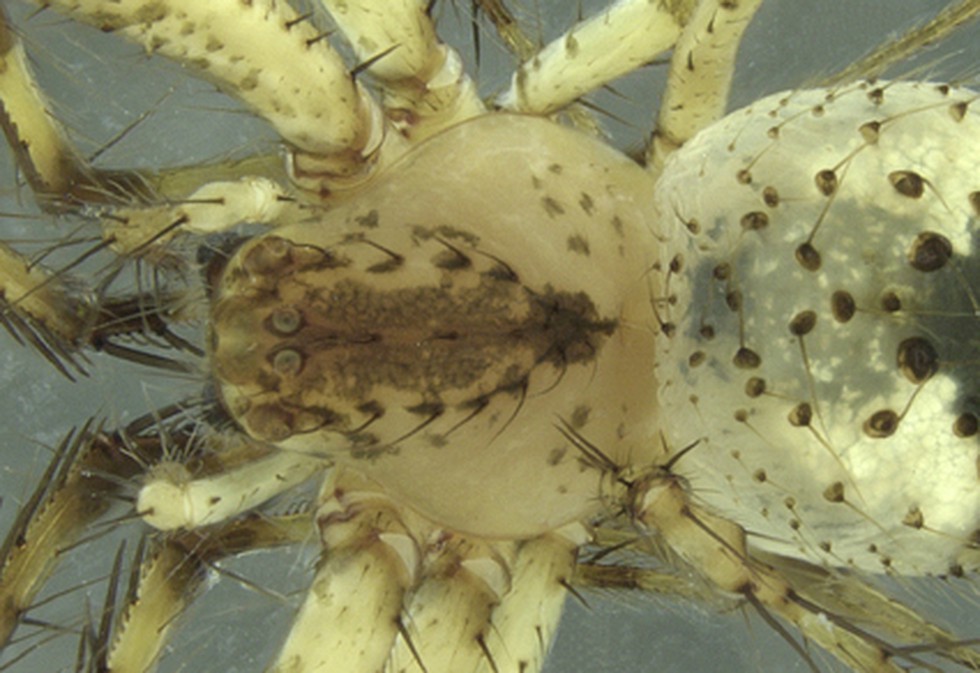
About Mimetus spinatus and Mimetus parvulus:
- They are two new species of spiders discovered in the southern Western Ghats, a biodiversity hotspot.
- Mimetus spinatus and Mimetus parvulus were collected from the Mookambika Wildlife Sanctuary, Karnataka and Ernakulam district of Kerala, respectively.
- Features:
- Both species belong to the spider family Mimetidae, commonly known as pirate or cannibal spiders due to their unique predatory behaviour.
- These spiders infiltrate the webs of other spiders, mimicking the vibrations of prey or mates to deceive and kill the host spider.
- Mimetus spinatus is characterised by its medium size, pale yellow head, and dull grey-white abdomen, with scattered light green mottling. It possesses long, black, flattened spine-like hairs on the dorsal head, which inspired its name.
- In contrast, Mimetus parvulus is distinguished by its pale creamy-rose head with dense grey-black mottling and a triangular-shaped, dull grey-white abdomen.
- The discovery marks the report of the genus Mimetus after 118 years of the discovery of the last Mimetus species (i.e. Mimetus indicus) from India.
- The addition of two new species brings the number of Mimetus species in India to three, all of which were spotted from the southern part of the country.
Prelims Pointers
Aug. 28, 2024
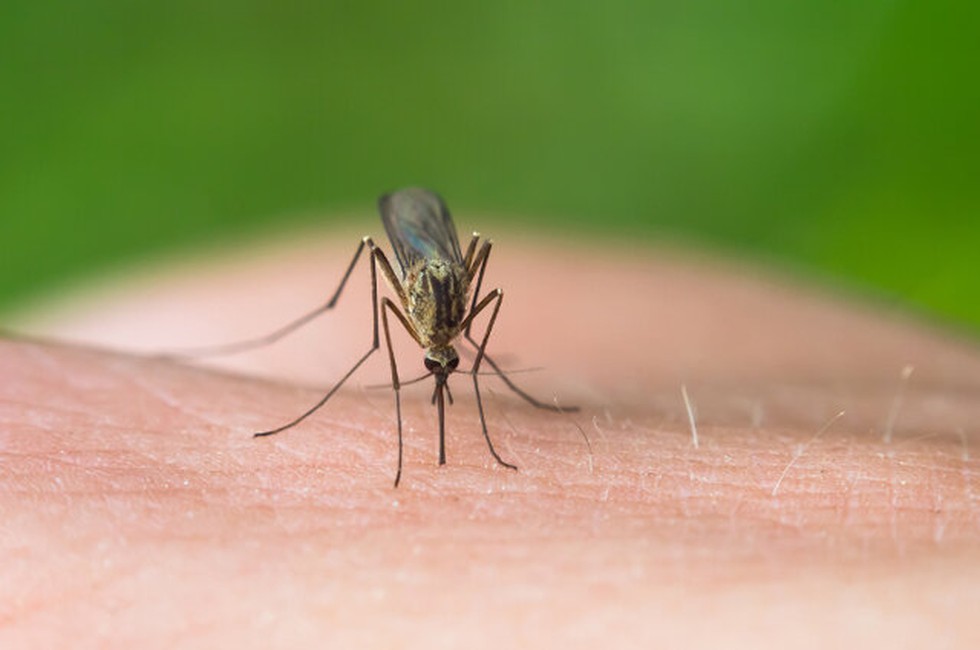
About Eastern Equine Encephalitis (EEE):
- It is an extremely rare but serious and often fatal infection caused by the EEE virus (EEEV).
- It causes encephalitis or inflammation of the brain.
- EEEV can infect a wide range of animals, including mammals, birds, reptiles and amphibians.
- Transmission: The spread of EEEV to mammals (including humans and horses) occurs through the bite of infected mosquitoes that feed on both birds and mammals.
- Human cases of EEE disease are rare but can cause serious illness.
- Symptoms:
- It is possible that some people who are infected with EEEV will not develop any symptoms.
- Symptoms typically appear 4-10 days after being bitten by an infected mosquito.
- Severe cases of EEE infection begin with the sudden onset of headache, high fever, chills, and vomiting that may progress into disorientation, seizures, encephalitis (inflammation of the brain), and coma.
- About 30% of people ill from EEE die, and many who survive the infection are left with permanent neurologic damage.
- Treatment:
- There are no vaccines to prevent EEE infection in people and no specific treatments for EEE disease.
- Treatment focuses on supportive therapy, including hospitalization, respiratory support, intravenous fluids, and prevention of other infections.

